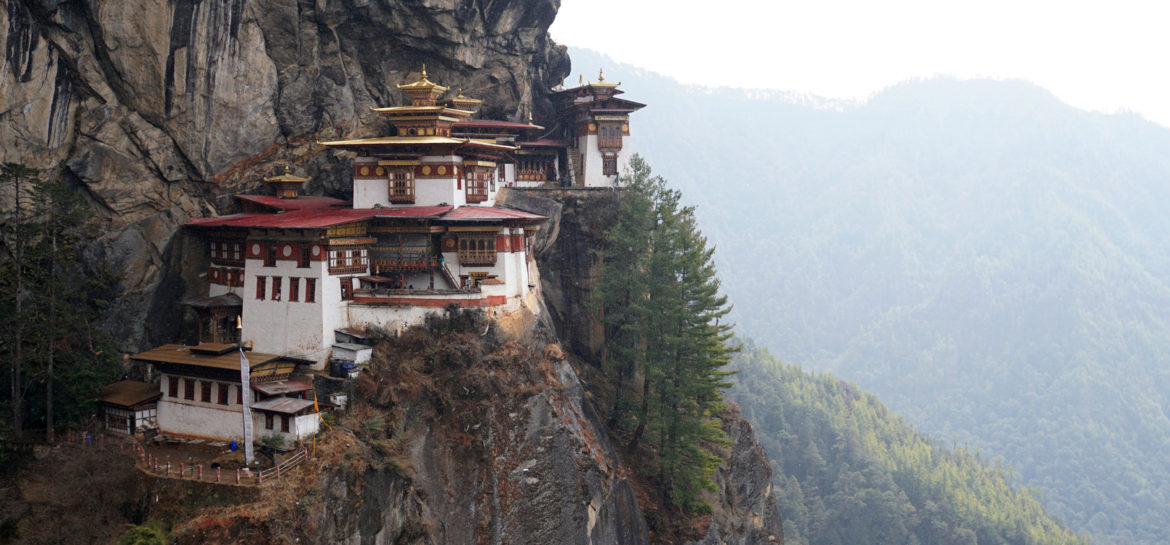
Day 6, Punakha to Paro
Last impressions of Punakha – breakfast in the sunny courtyard, chirping mynah birds above our heads, and warm smiles from Amankora staff. It was an ideal morning, marred only by our sadness to leave this little piece of paradise.
對 Punakha 的最後印象,是露台上的陽光早餐、樹梢上唱著歌的家八哥、以及 Amankora 工作人員燦爛的笑容。幾乎是個完美的早晨,唯一的遺憾就是我們不得不準備離開這片小天堂了。
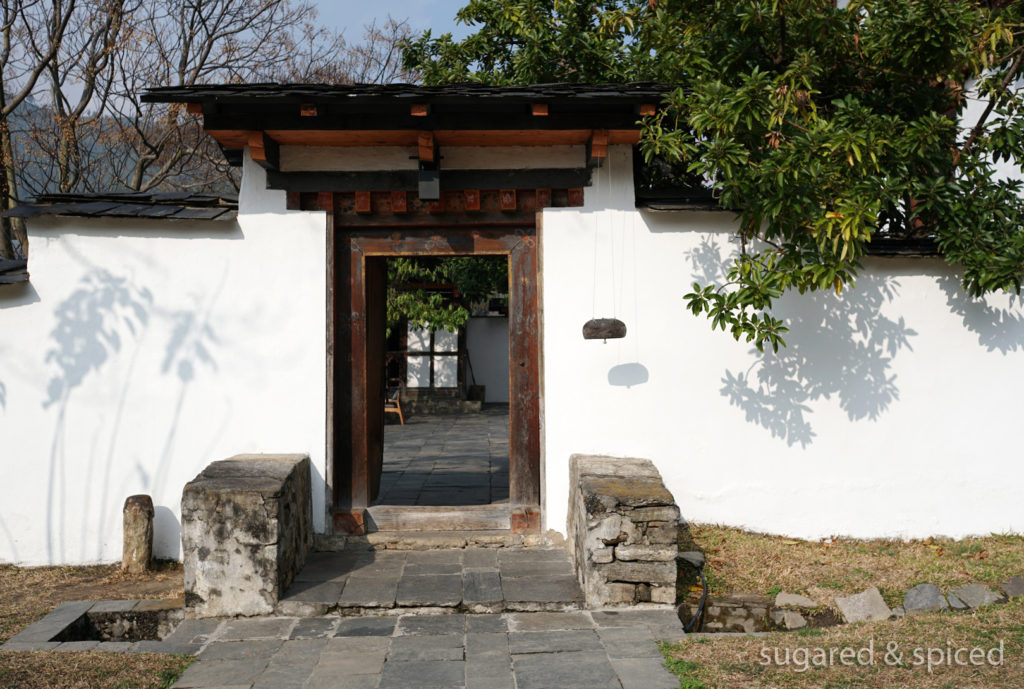
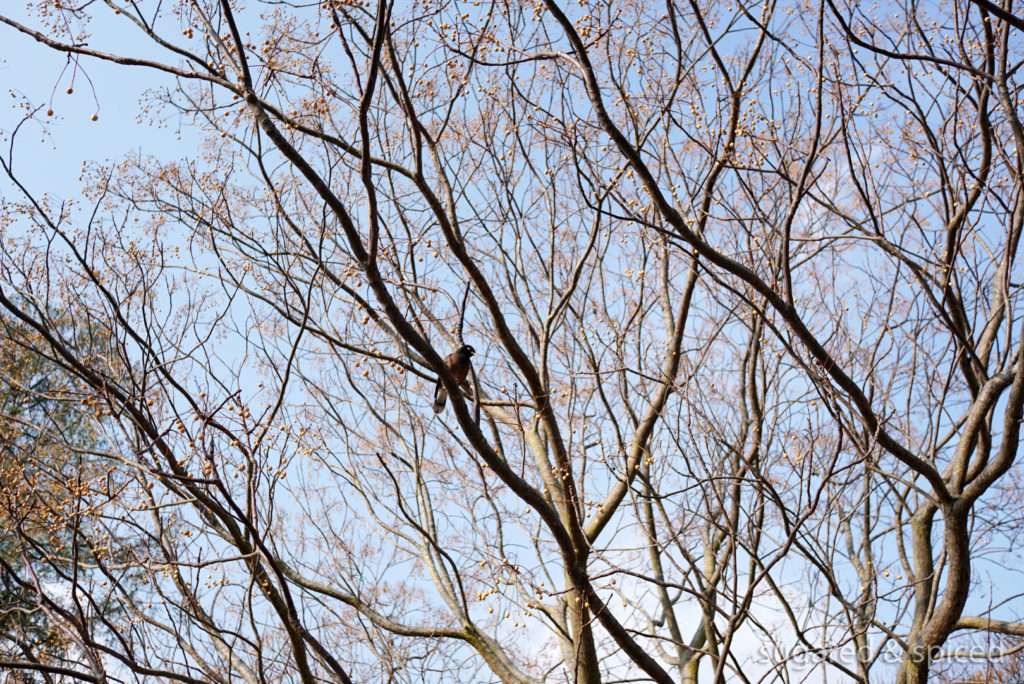
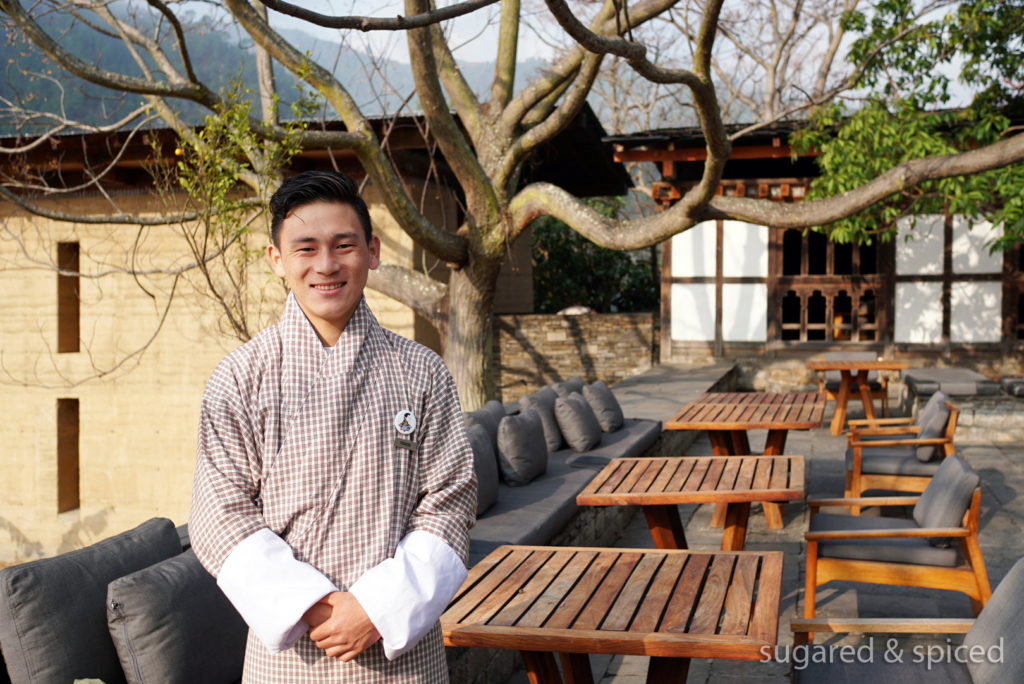
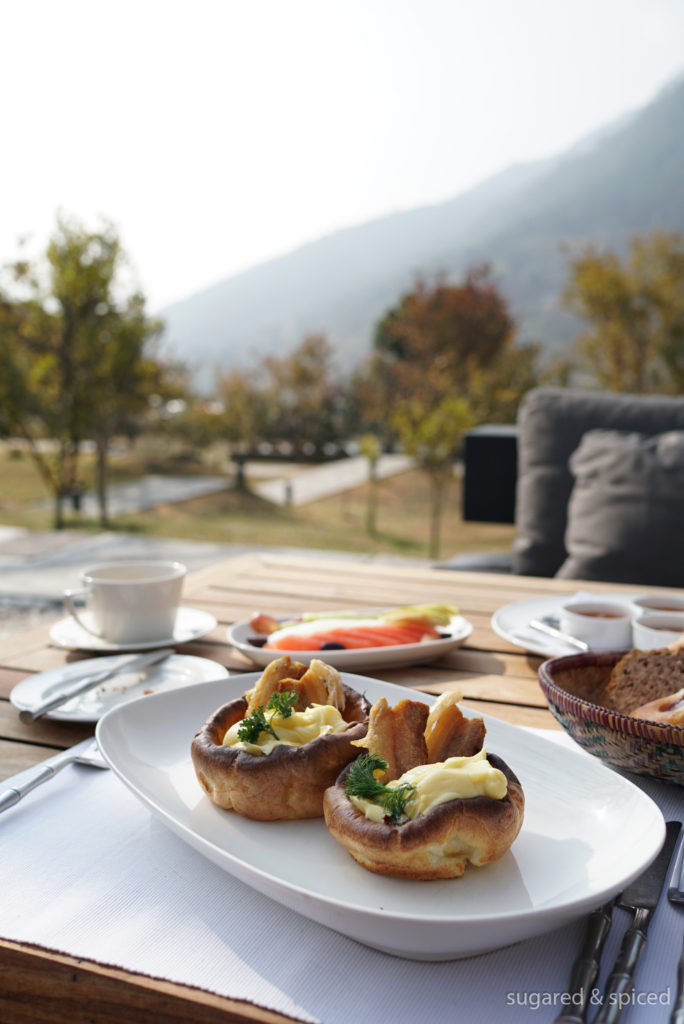
When you ask for some fruits and the staff brings you this beautifully arranged fruit plate…the service here is always above and beyond.
跟服務生說想吃點水果,精美的拼盤就出現在眼前,也真是太細緻了。
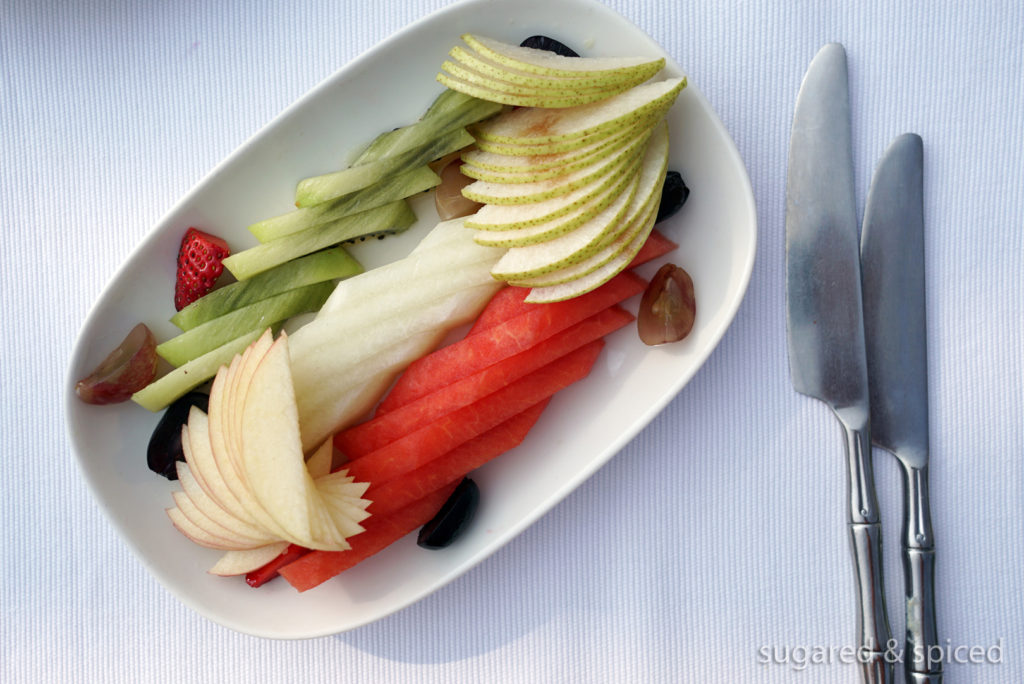
Crossing the suspension bridge one last time, on our way to leave the lodge.
最後一次走過這座佈滿五色風馬旗的吊橋。
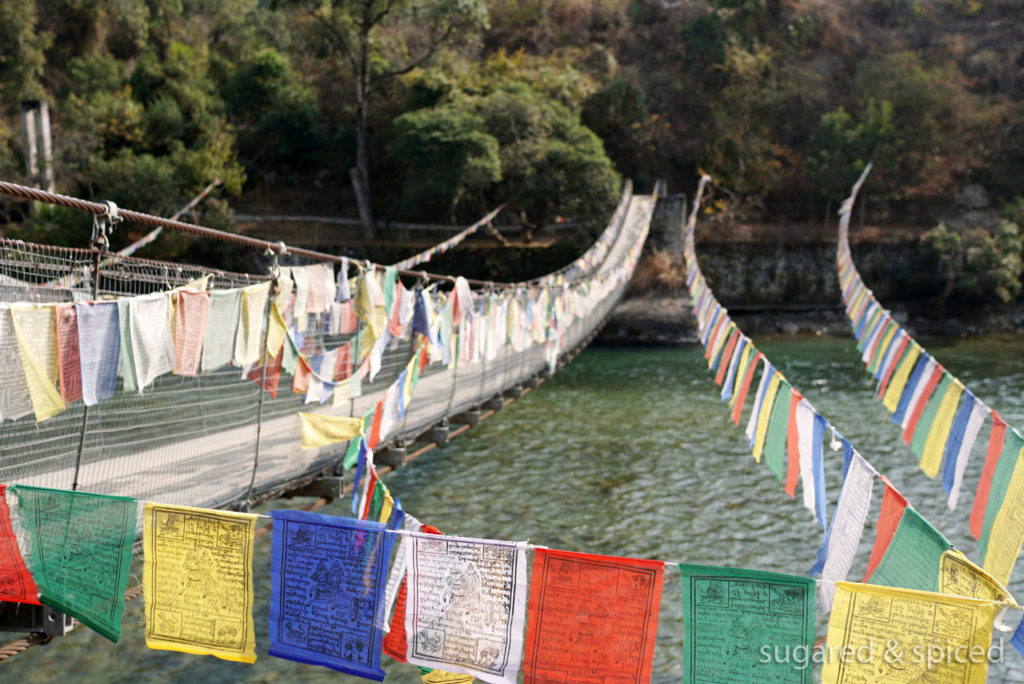
From Punakha, we drove west to Paro, our final stop in Bhutan.
今日行程:從 Punakha 往西開往我們在不丹的最後一站,Paro。
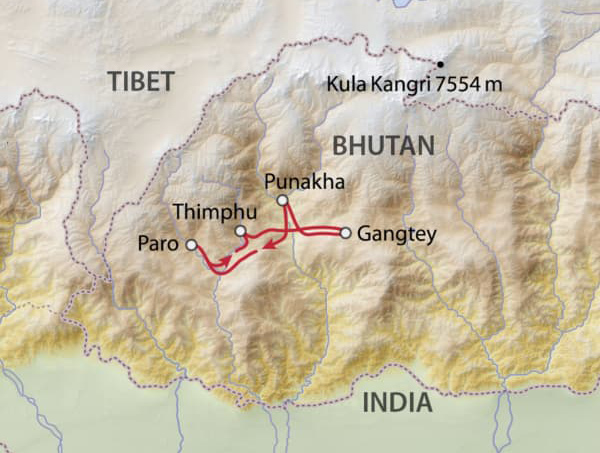
Upon reaching Paro, we first stopped at a farmhouse for lunch. This was a special arrangement by Amankora so we could experience eating at a traditional home and get a glimpse of how the locals live.
抵達 Paro 後,Amankora 貼心地安排我們在一間農家吃午餐,藉機體驗當地人的生活方式。
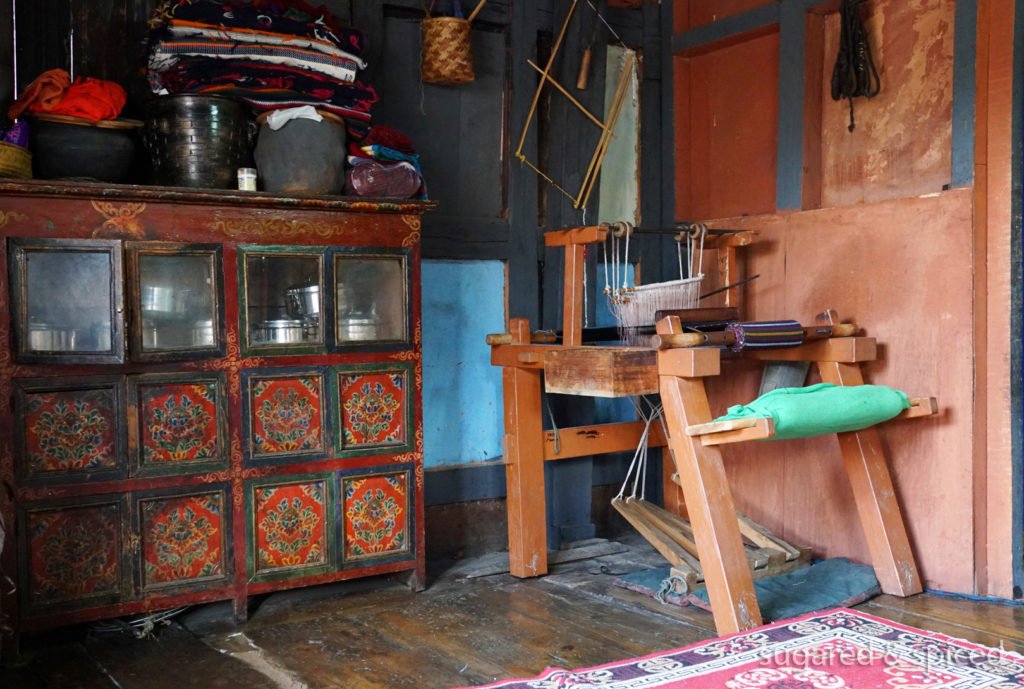
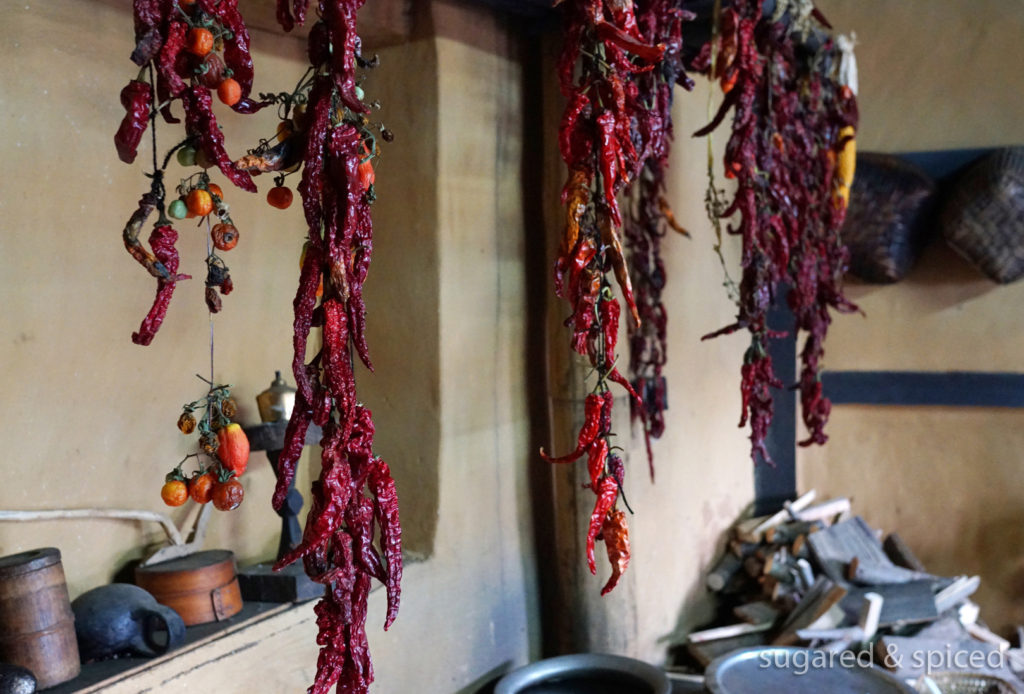
Welcome drink and snacks – ngaja milk tea with puffed rice and crackers.
不丹人的待客之道 – 總之,先來杯熱奶茶和小零嘴。
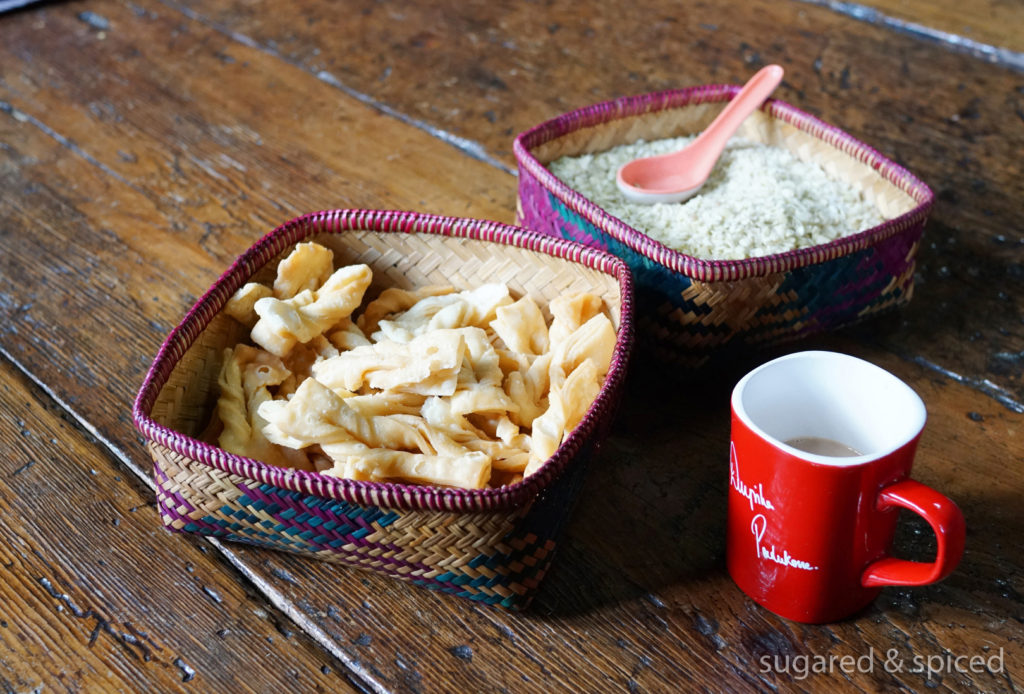
The dining room, which also functions as the bedroom at night, has a traditional bukhari oven at the center to keep us and the food warm.
在晚上,飯廳就成為這家人的臥室,房間的中央有個傳統火爐,在冬日寒夜裡也能暖暖入睡。
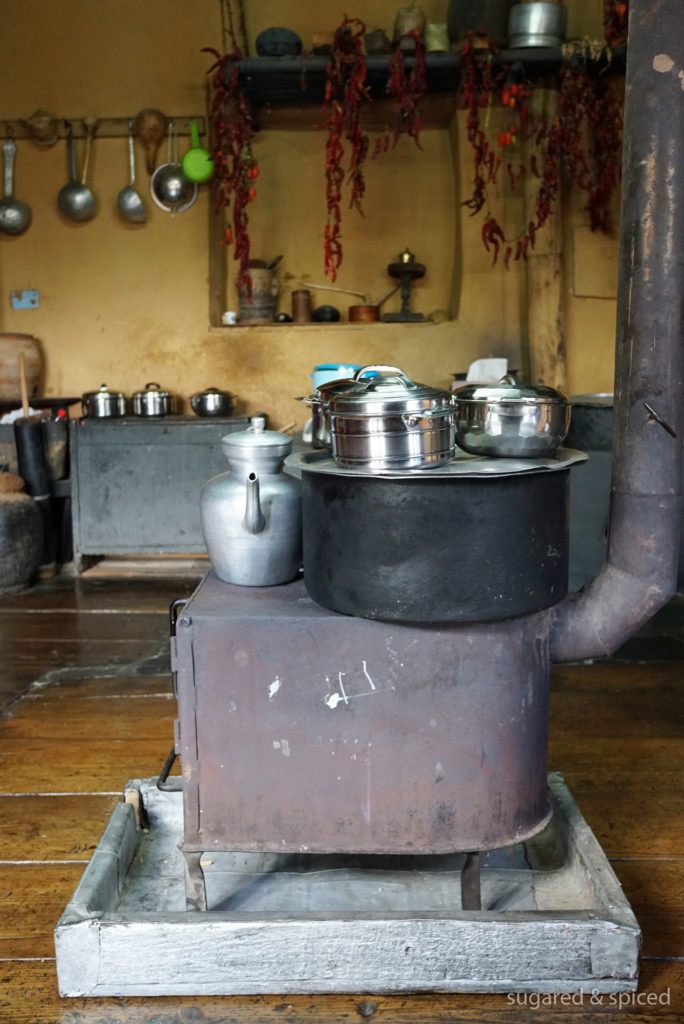
As is the custom in Bhutan, we all sat on the floor for the meal. This was the only occasion throughout the whole trip where we had the chance to share a meal with Dawa and Kinley, making this an even more intimate experience.
不丹人吃飯習慣席地而坐,我們當然也入境隨俗。這是我們整個旅程中唯一一次與 Dawa 和 Kinley 一起用餐,邊吃邊聊非常開心;美食果然最能拉近人與人之間的距離啊。
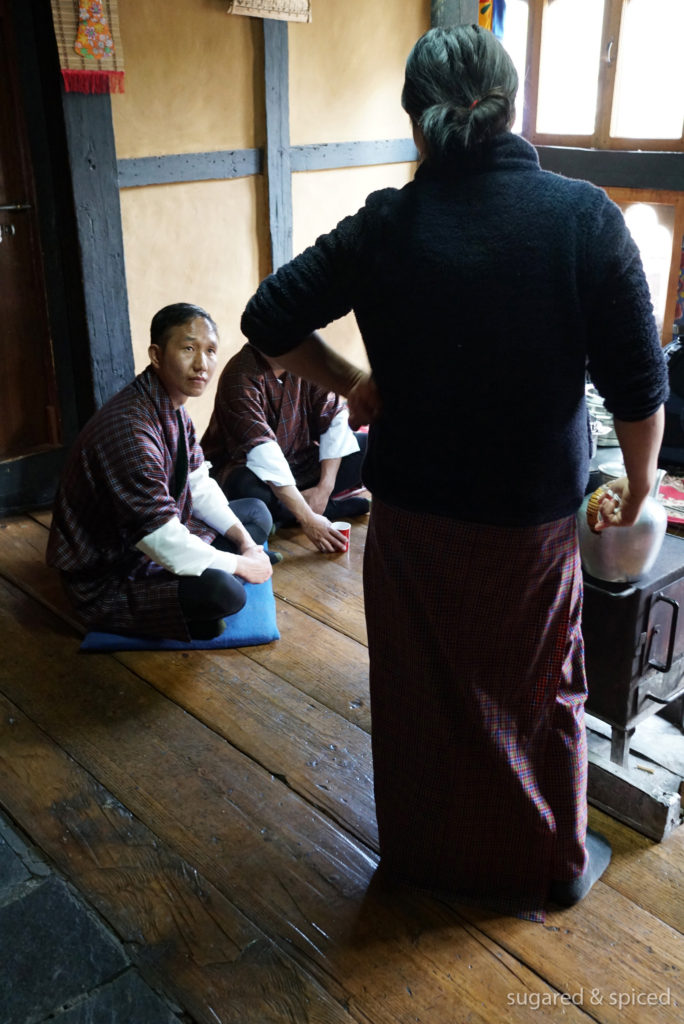
And what an incredibly delicious meal it was! Pumpkin soup, momo made with buckwheat flour, glass noodle with beef, turnips stewed with air dried pork, homemade noodles, and of course, ezay and ema datse – simple, wholesome dishes characteristic of the local cuisine which I’ve grown to love during the past few days.
而且,午餐真的非常美味!女主人精心烹調了拿手好菜 – 南瓜湯、蕎麥餃子、牛肉粉絲、豬肉燉蘿蔔、自製手工麵條、當然還有必不可少的起司炒辣椒和辣椒蘸醬。料理裝在樸實無華的鍋子裡,和之前在酒店裡用漂亮的瓷器相比,感覺更貼近當地。
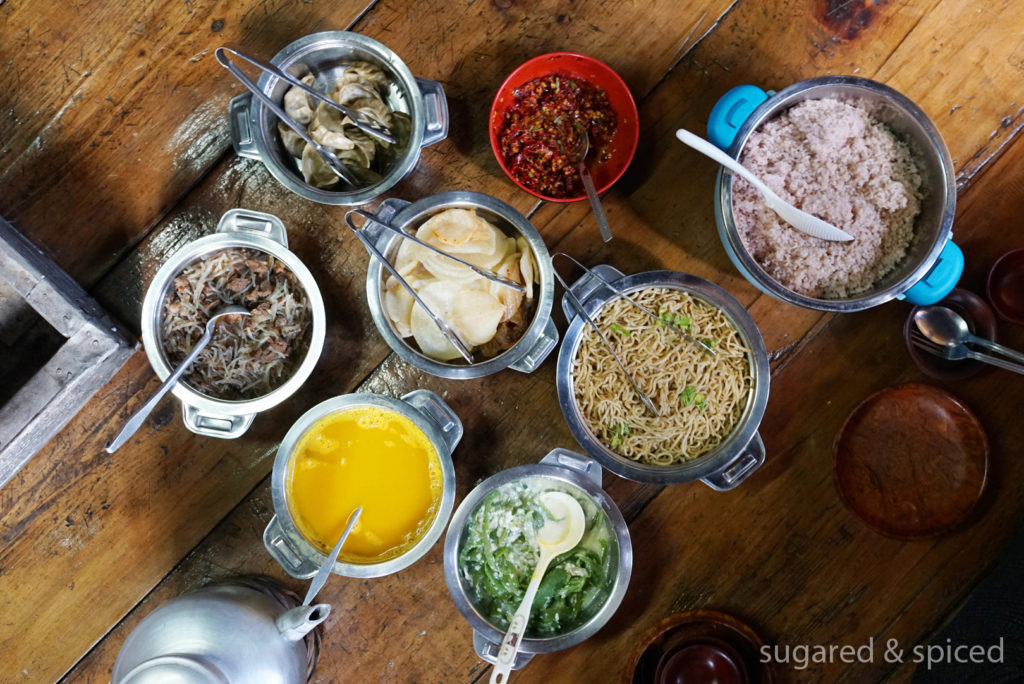
We also got to sample some homemade cordyceps ara, made by infusing cordyceps in local rice wine.
女主人私釀的冬蟲夏草米酒。
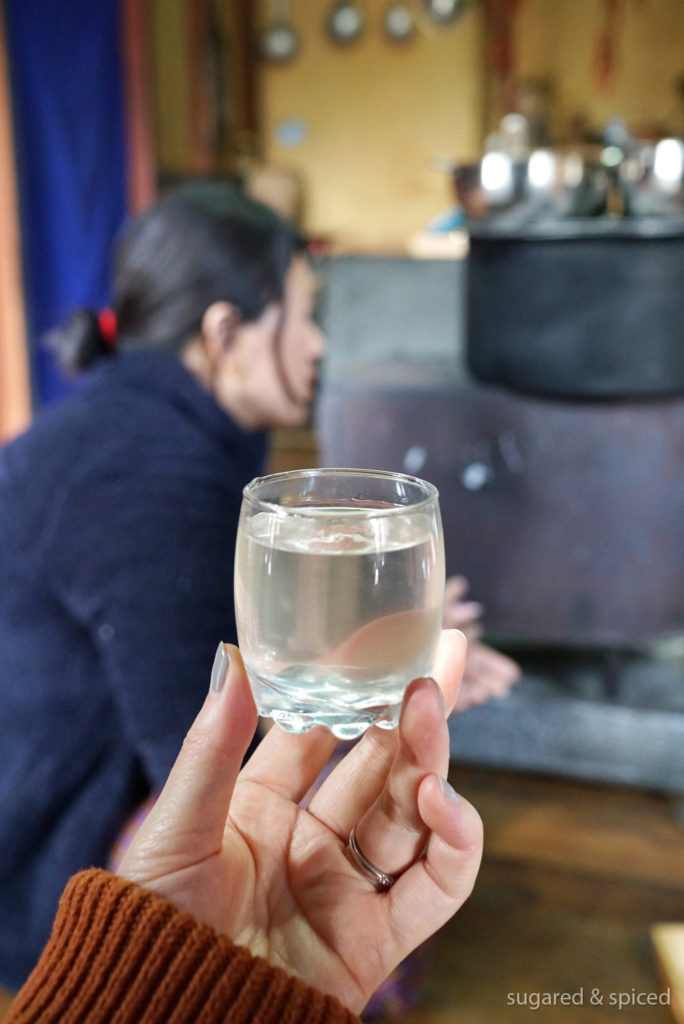
After lunch, we arrived at the last lodge of our journey – Amankora Paro.
酒足飯飽後,我們抵達這次旅程的最後一間 lodge – Amankora Paro。
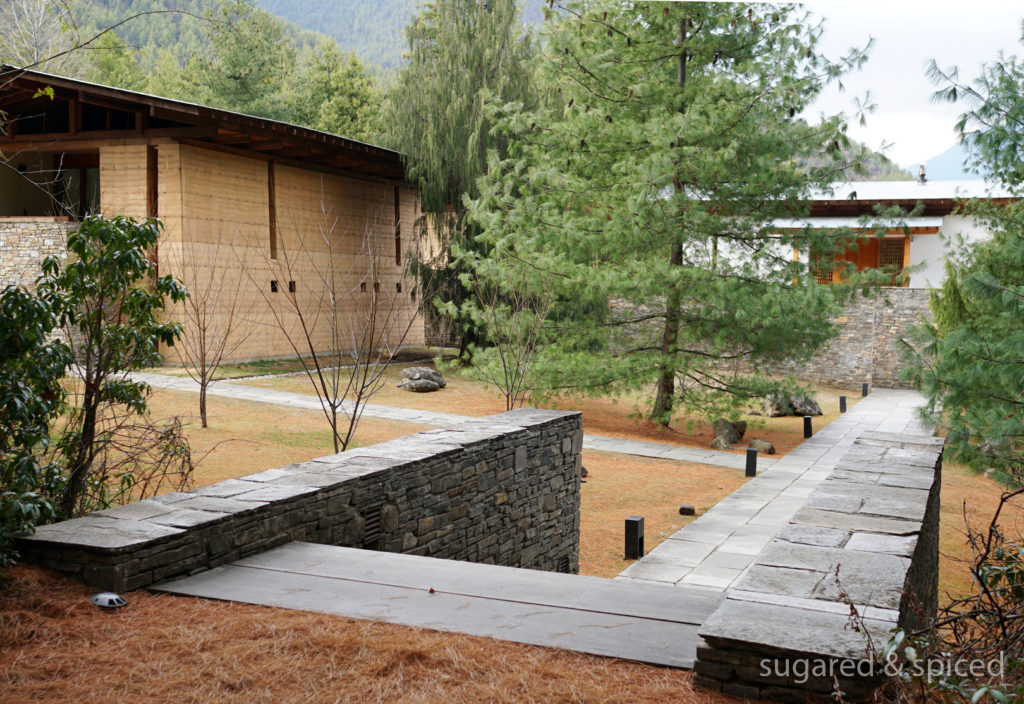
The lodge is set amidst a pine forest – quiet, secluded, out of this world. A murmuring creek meanders on the pine needle-covered forest floor, leading us to discover charming spots dotted across the lodge grounds.
Paro lodge 隱匿於一片靜謐的松林中,外形古樸同時具有簡約的美感。順著小溪的潺潺流水漫步於林間,無意間發現了不少讓人想駐足片刻的美麗角落。
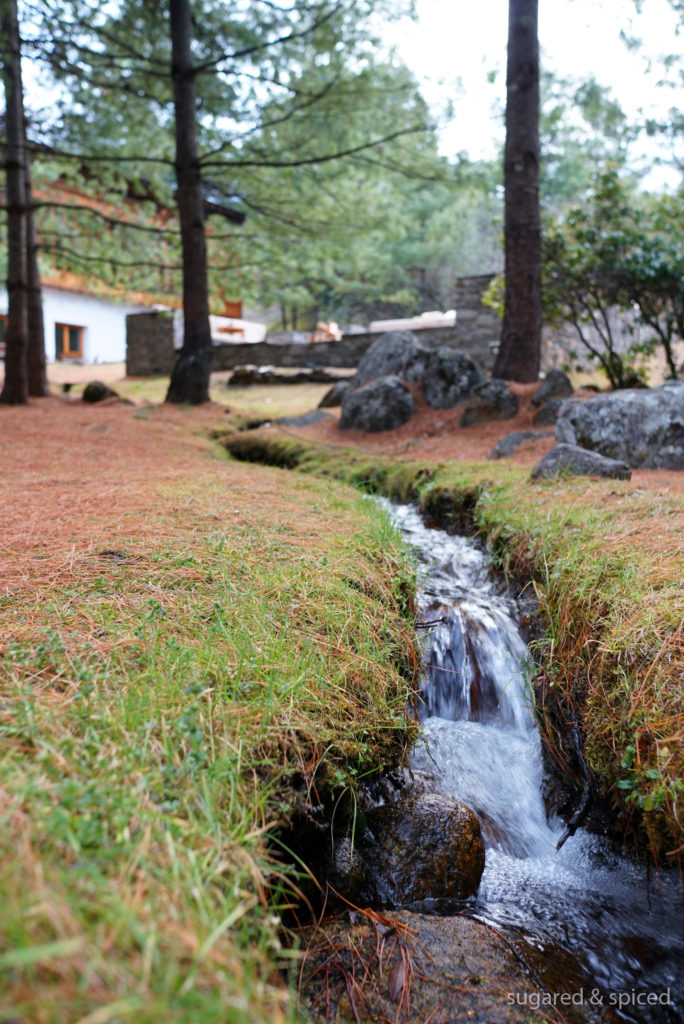
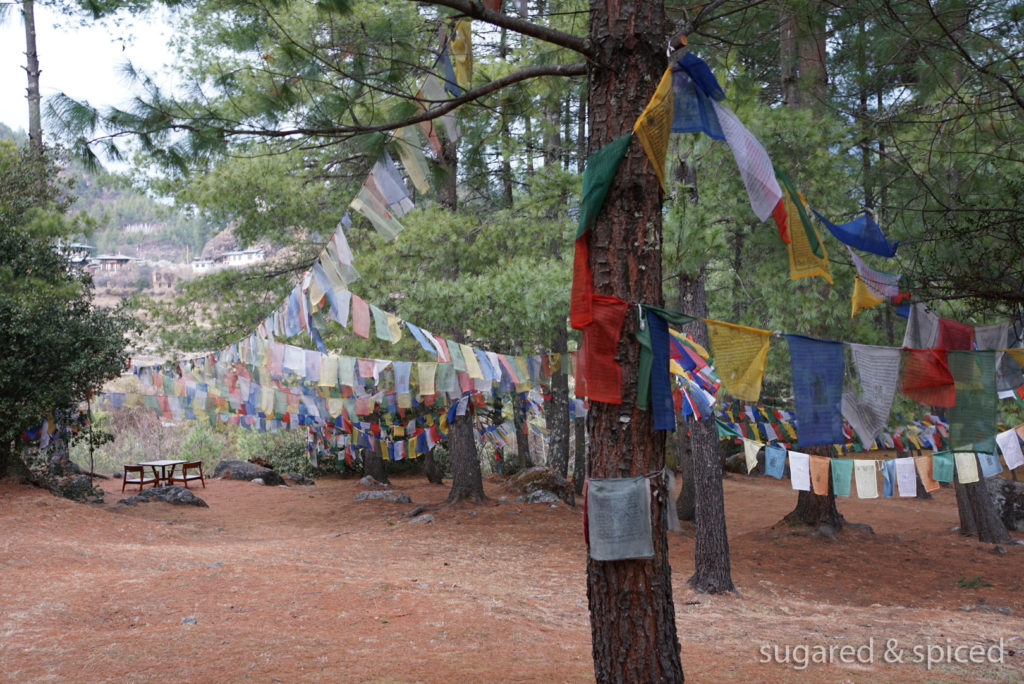
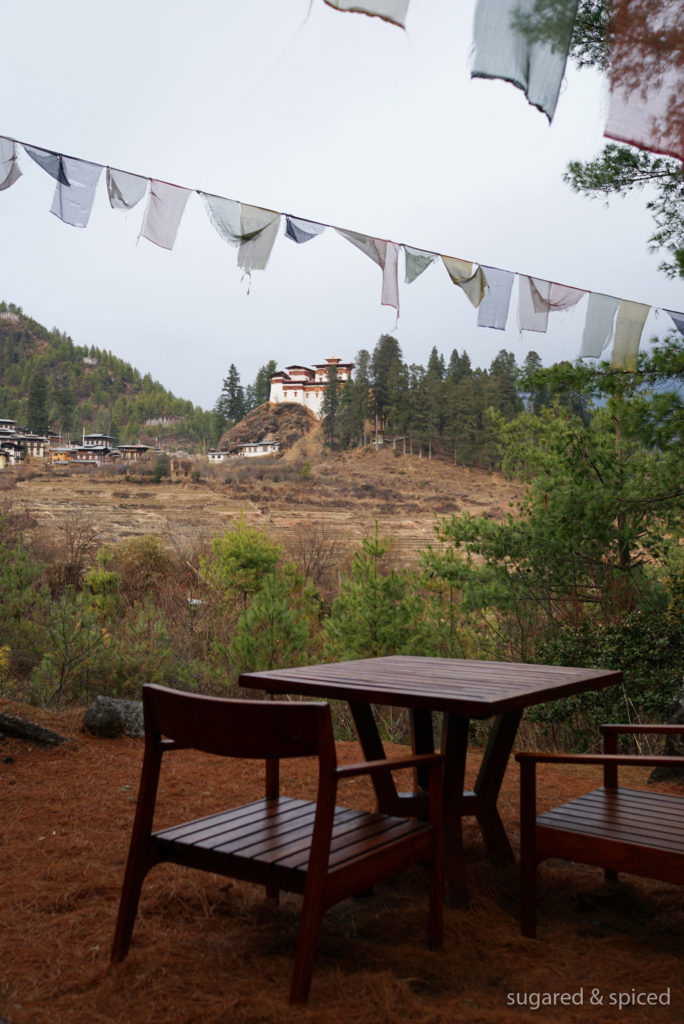
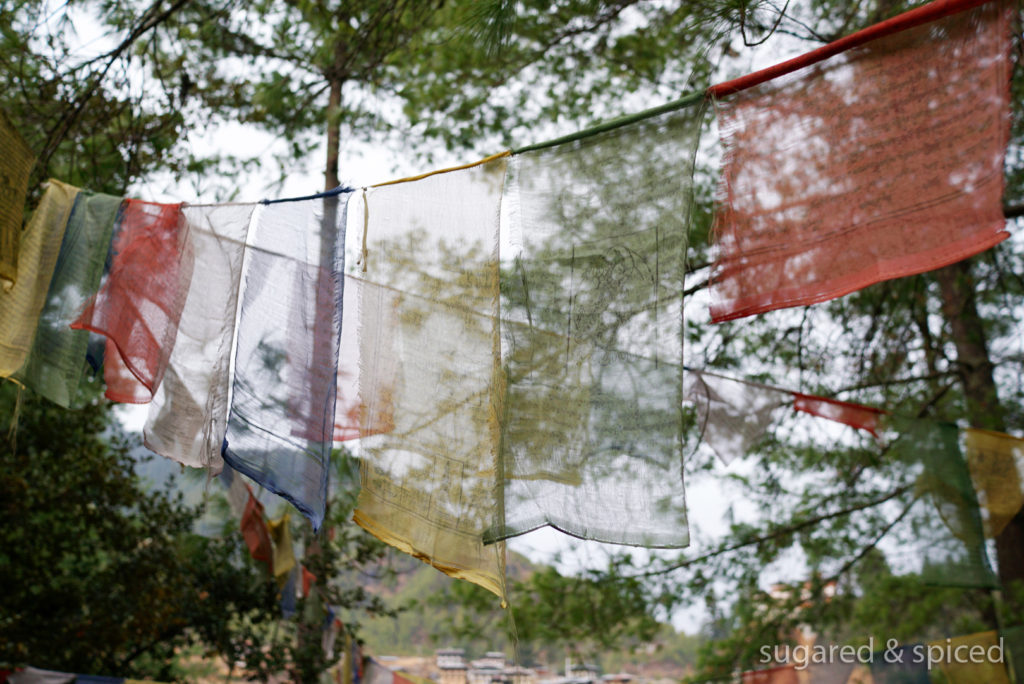
As always, a staff welcomed us at the entrance with warm towels scented with lemongrass.
一如既往,入口處是面帶微笑的工作人員,為我們端上帶有檸檬草香氣的熱毛巾。
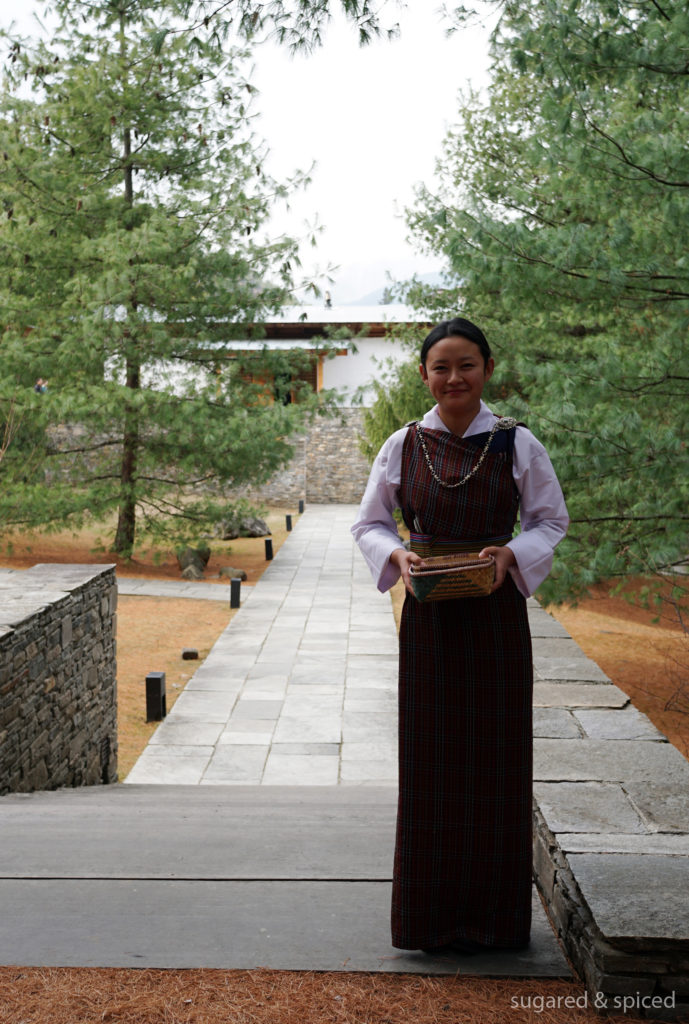
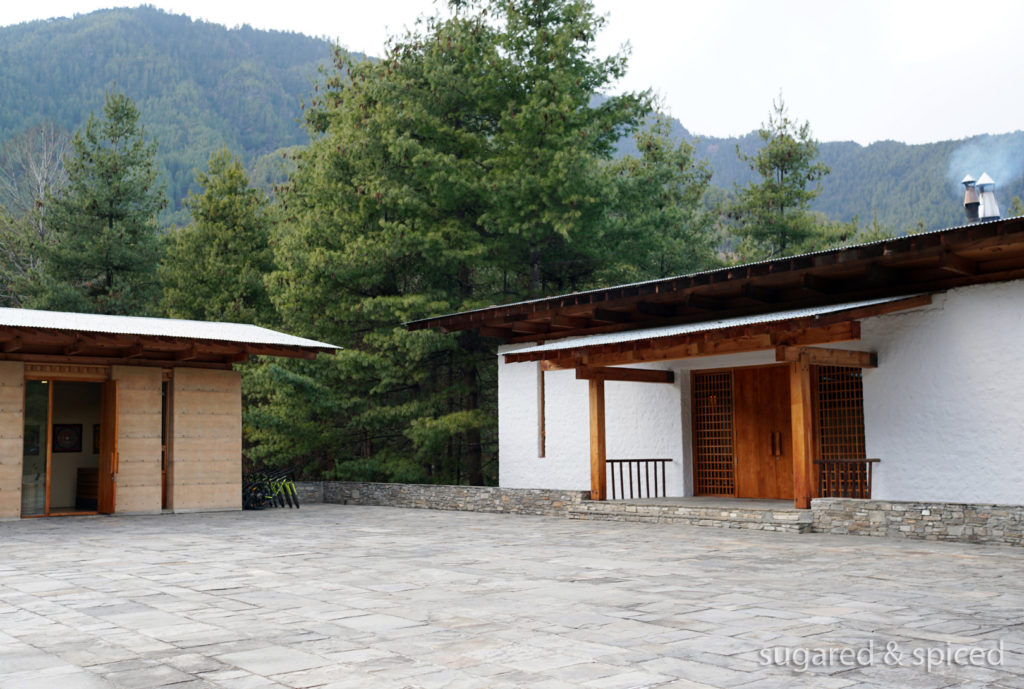
A serene living space that looks out to pine forests and – if weather permits – Mount Jomolhari, the highest peak in Bhutan.
從起居室望出去是一片松林,天氣好的話還能眺望不丹最高峰 Mount Jomolhari。
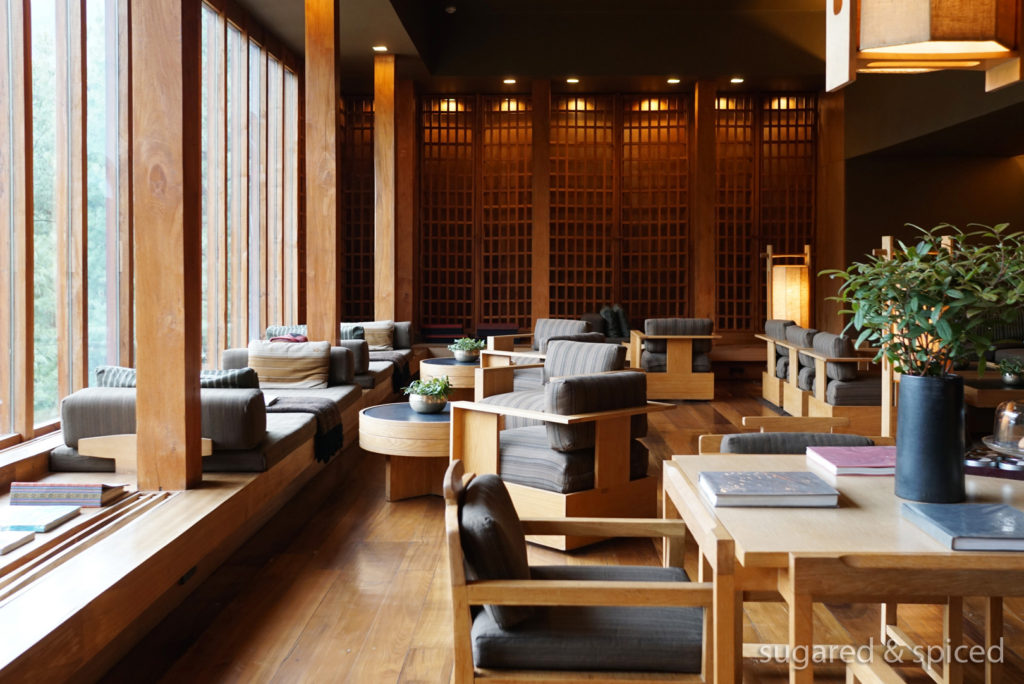
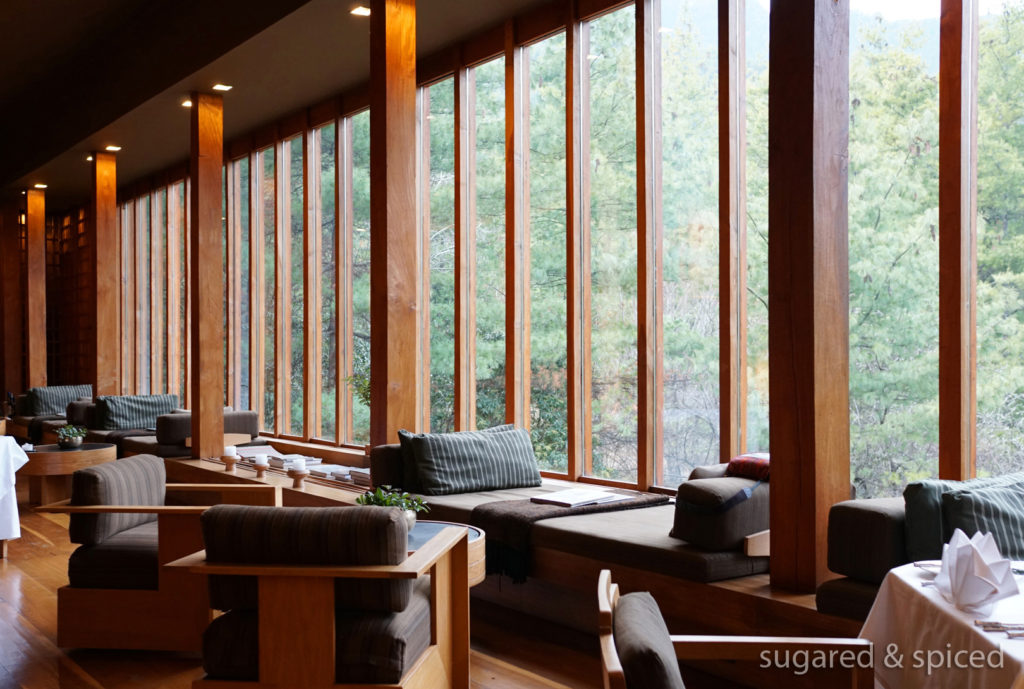
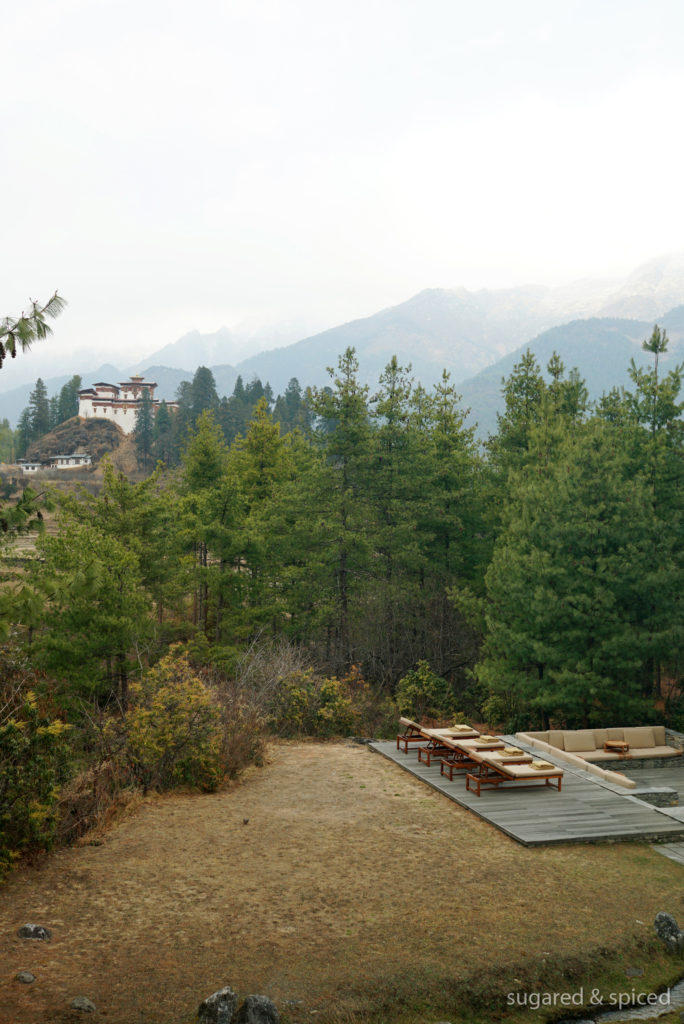
Residential lodges, hidden in the woods.
松林之中的客房。
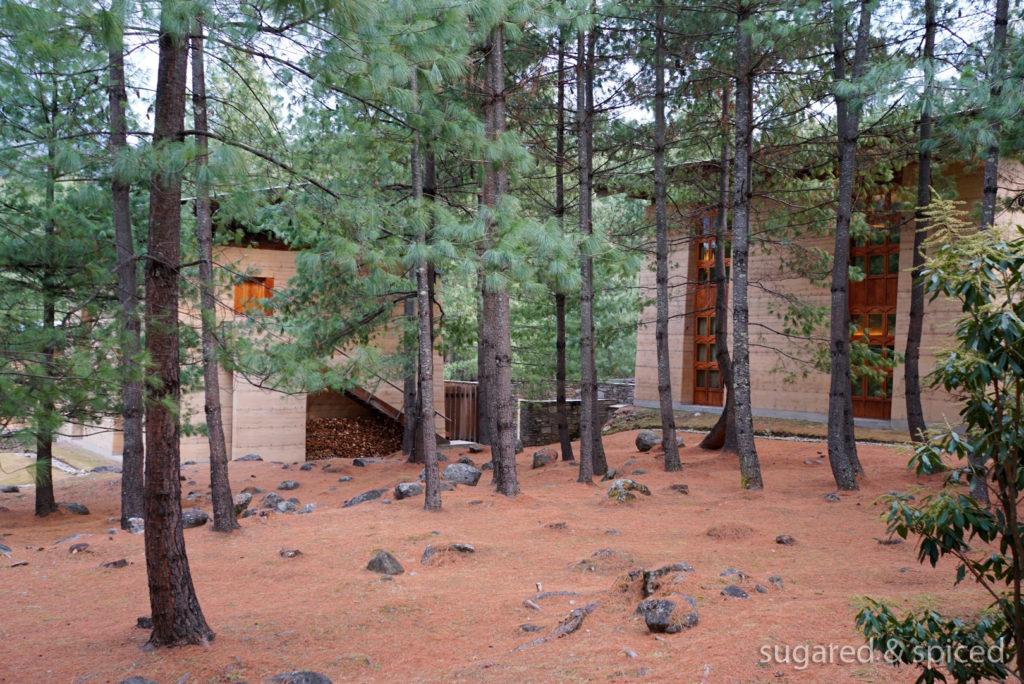
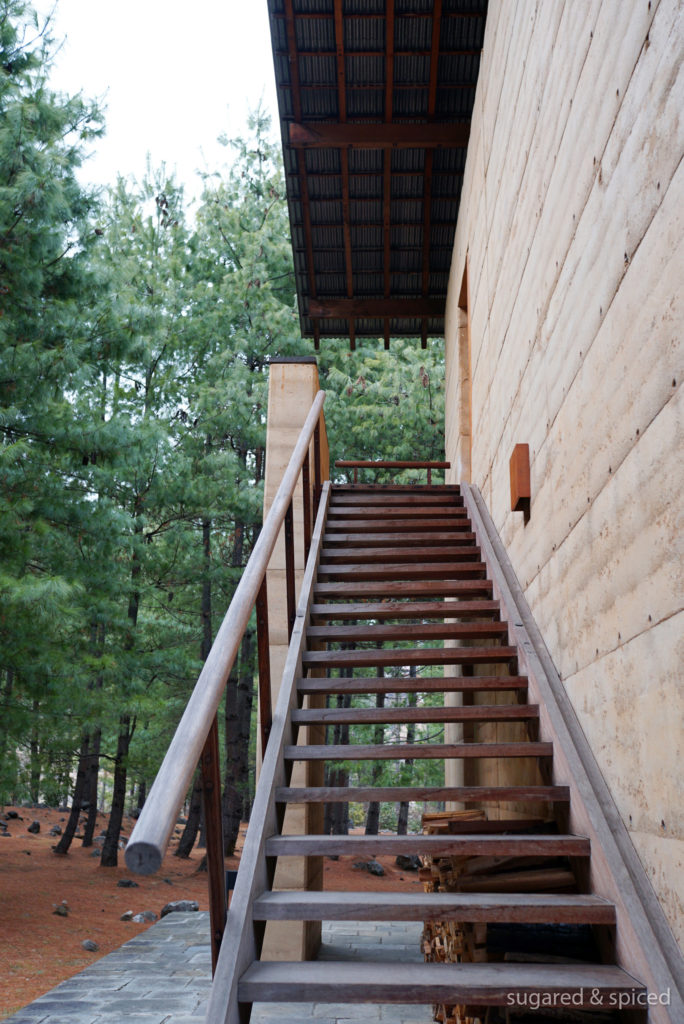
Our home for the next two nights, which needs no further introduction as it has the same setup as that of the Punakha lodge.
這是我們接下來兩晚的家,和之前寫過的 Punakha lodge 是一樣的佈置,就不重複介紹了。
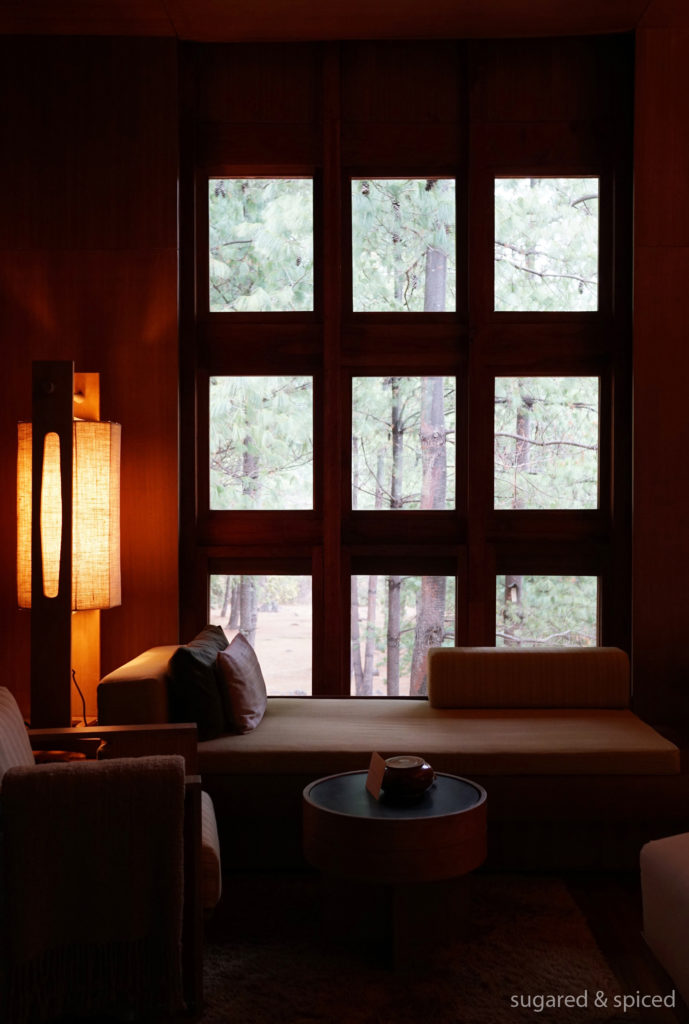
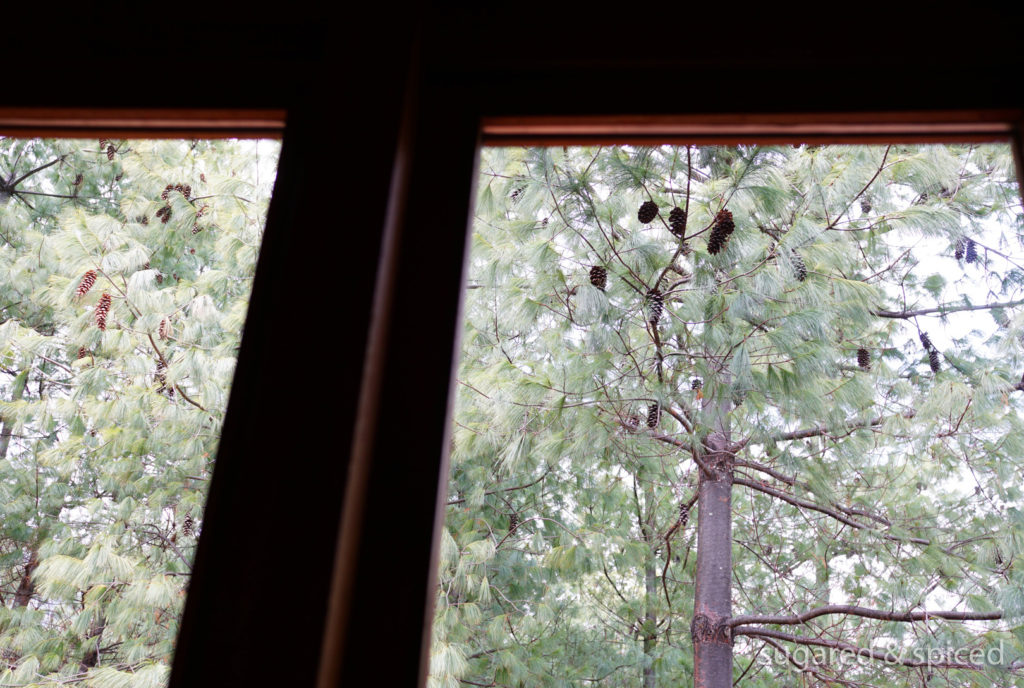
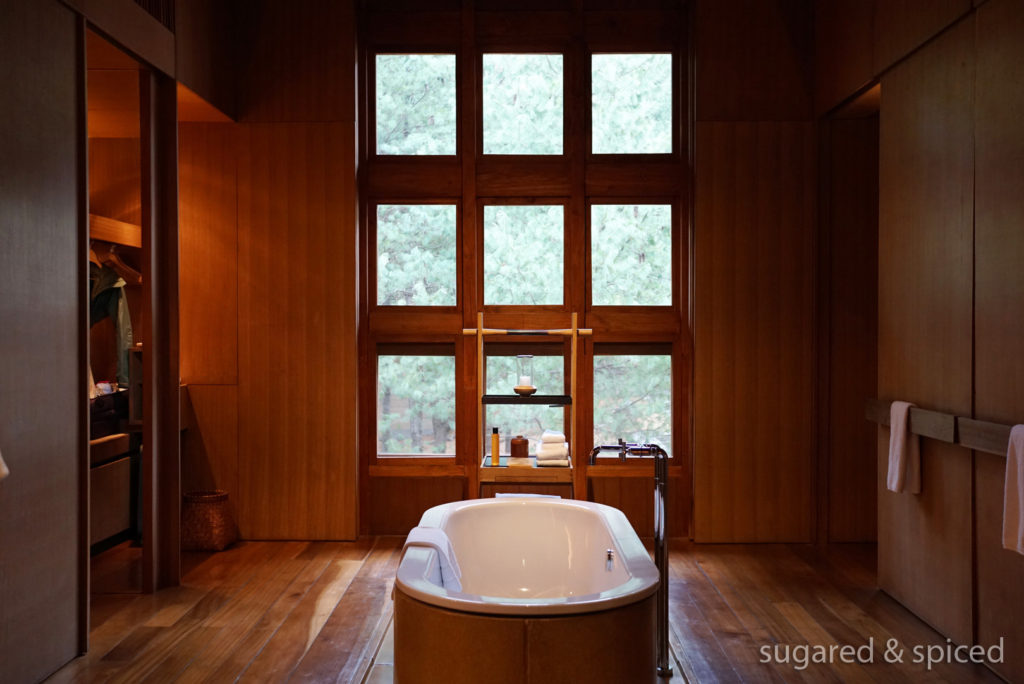
We spent the afternoon relaxing in the lodge, taking advantage of its many thoughtfully designed spots, such as this patio looking into the woods.
長途奔波後不免有些疲累,我們決定取消當天下午的行程表,留在 lodge 裡好好享受一下這裡的設施。
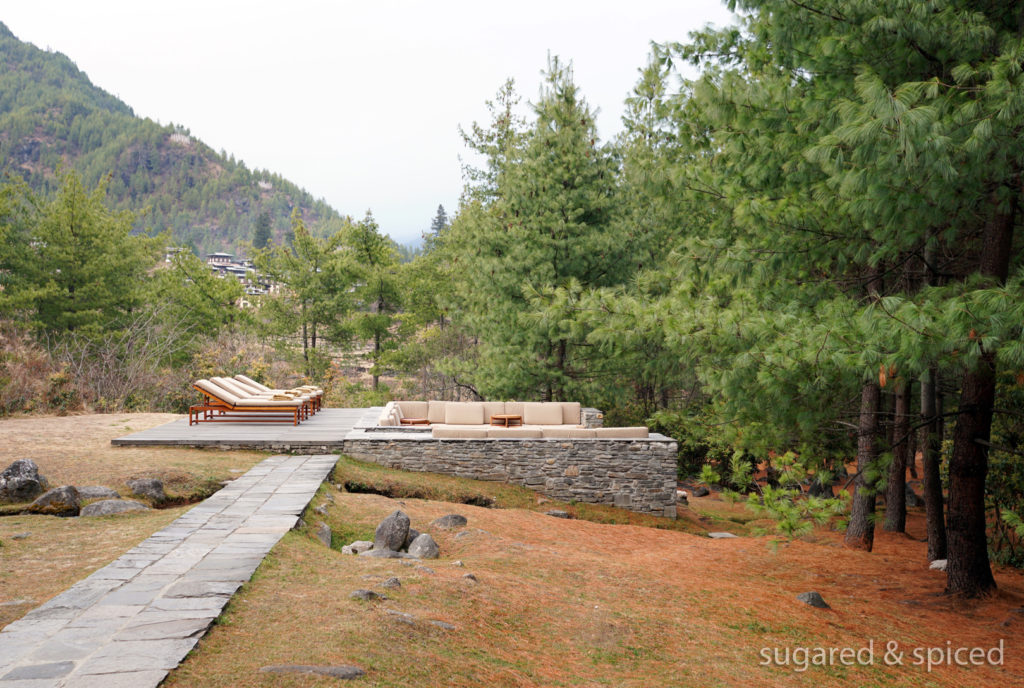
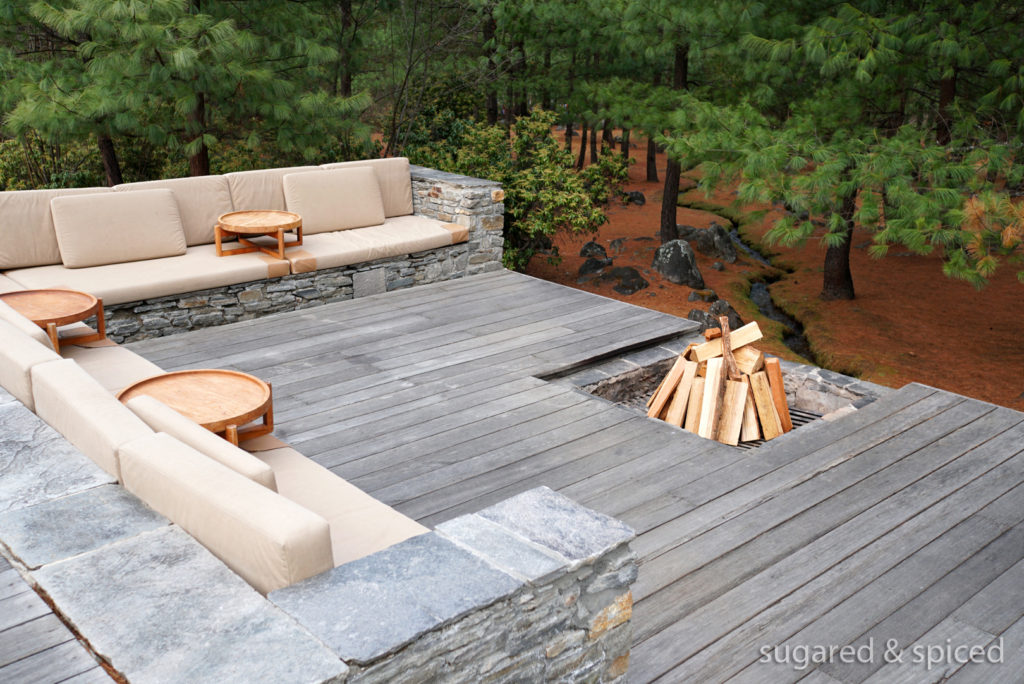
A staff setting up a roaring bonfire and hot ginger tea for us as the sun sets.
在面向松林的露台上,工作人員為我們升起溫暖的篝火,倒上熱騰騰的蜂蜜薑茶。兩人坐在這裡啜著熱茶,看著火花跳躍,有一搭沒一搭地聊著天,不知不覺中就天黑了。
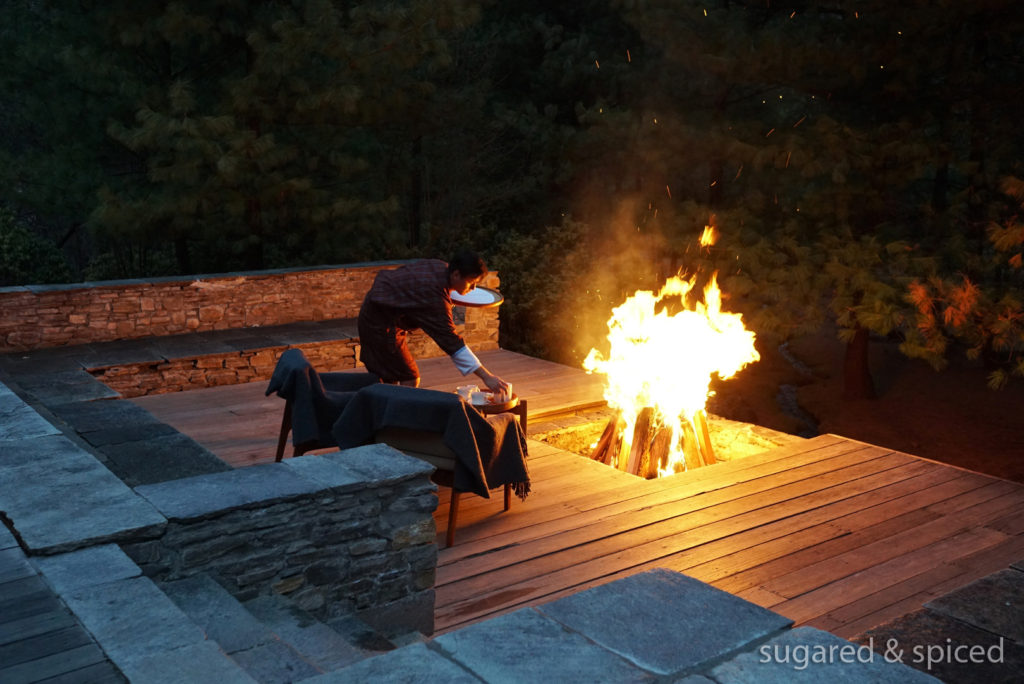
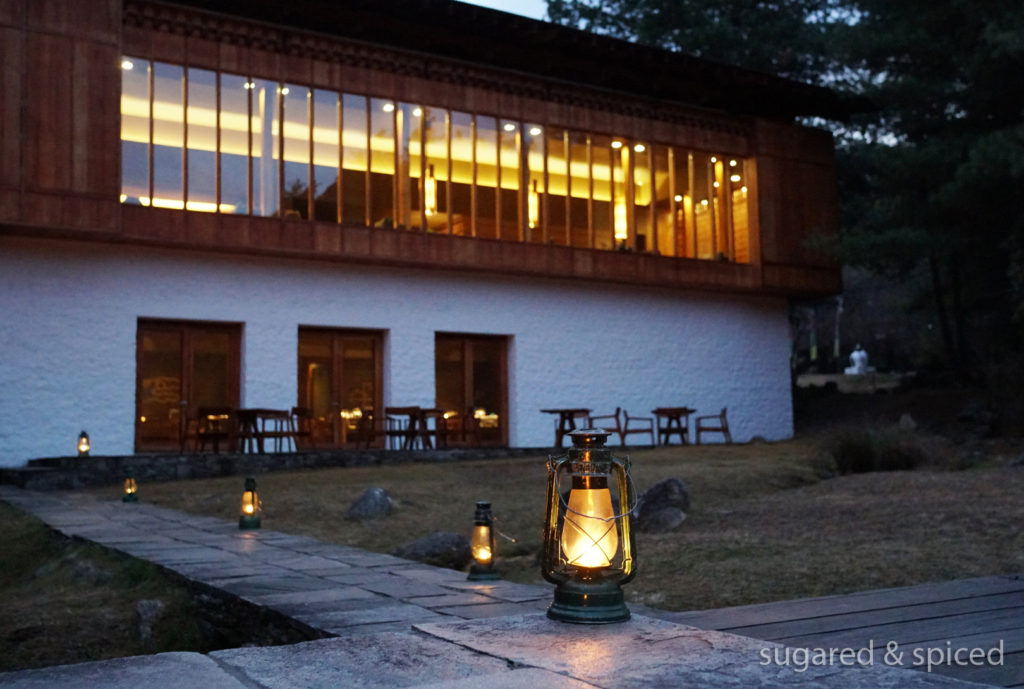
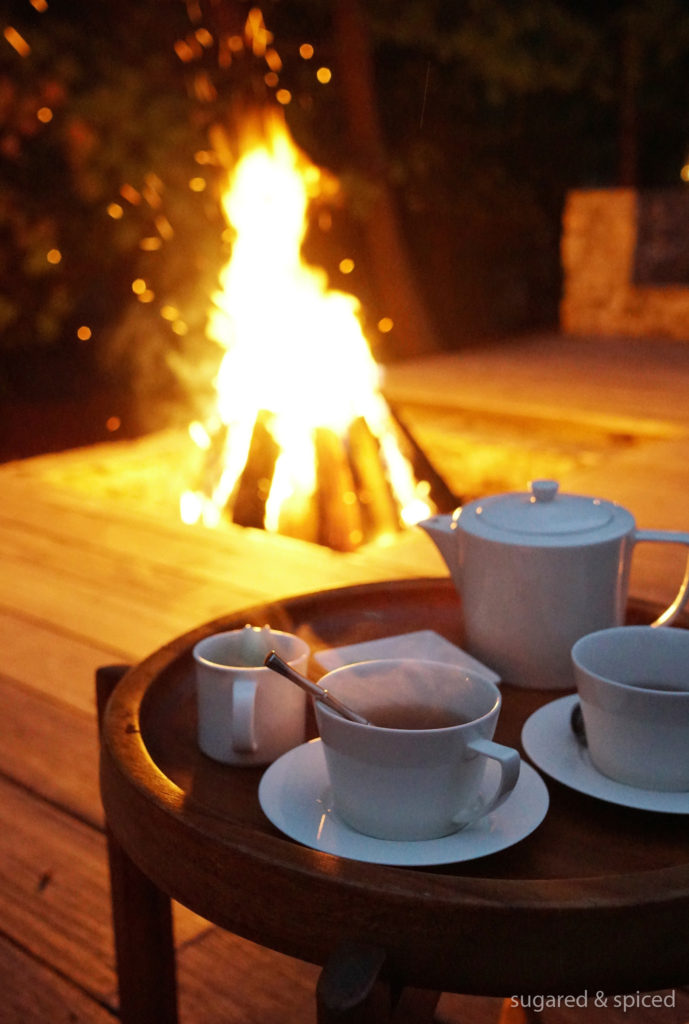
Amankora has also organized a prayer flag making class in the living room. This old man, a local villager, used to make prayer flags for a living, but as the craft became industrialized (prayer flags are now mostly printed in factories), he now only makes prayer flags on a by-appointment basis at Amankora.
酒店起居室裡還有風馬旗製作工坊。這位老人家曾經以手工製作風馬旗維生,不過隨著工業化發展,現在的風馬旗都在工廠裡由機器印刷製成,老人家也只有特定時刻會受 Amankora 的邀請到酒店來為客人們製作手印風馬旗了。
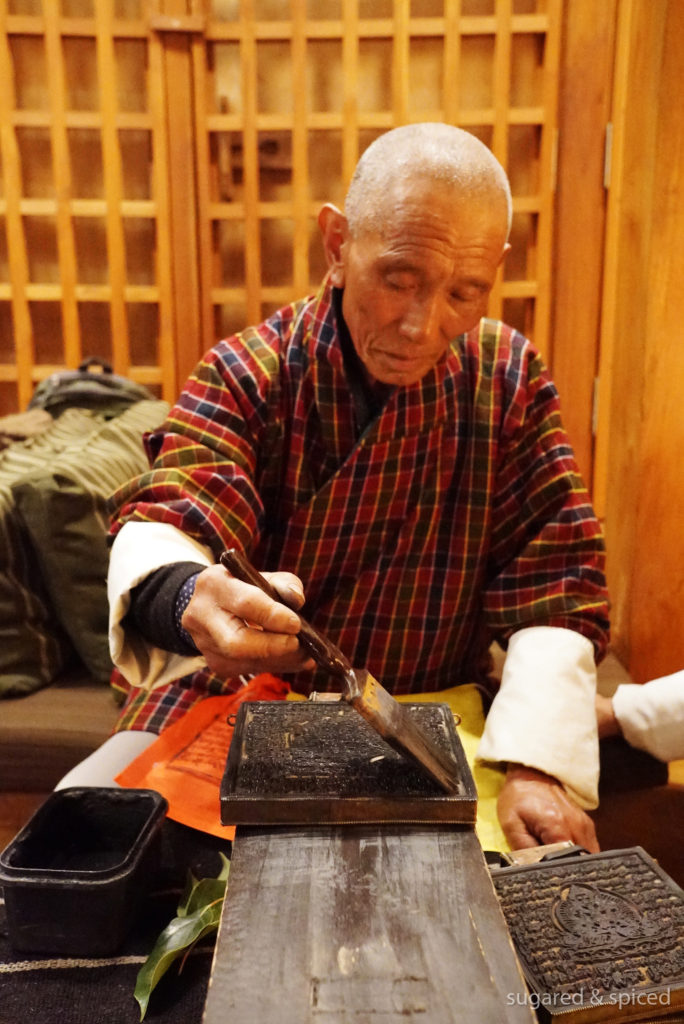
First, black paint made from mud and glue is brushed onto the wood engraving, which is then covered with a colored flag and rubbed with leaves to imprint the pattern onto the flag.
印製的過程非常簡單 – 先將由黑土和漿糊混合而成的油墨均勻刷在刻模上,再蓋上彩旗用葉子來回按壓,將油墨印在彩旗上。
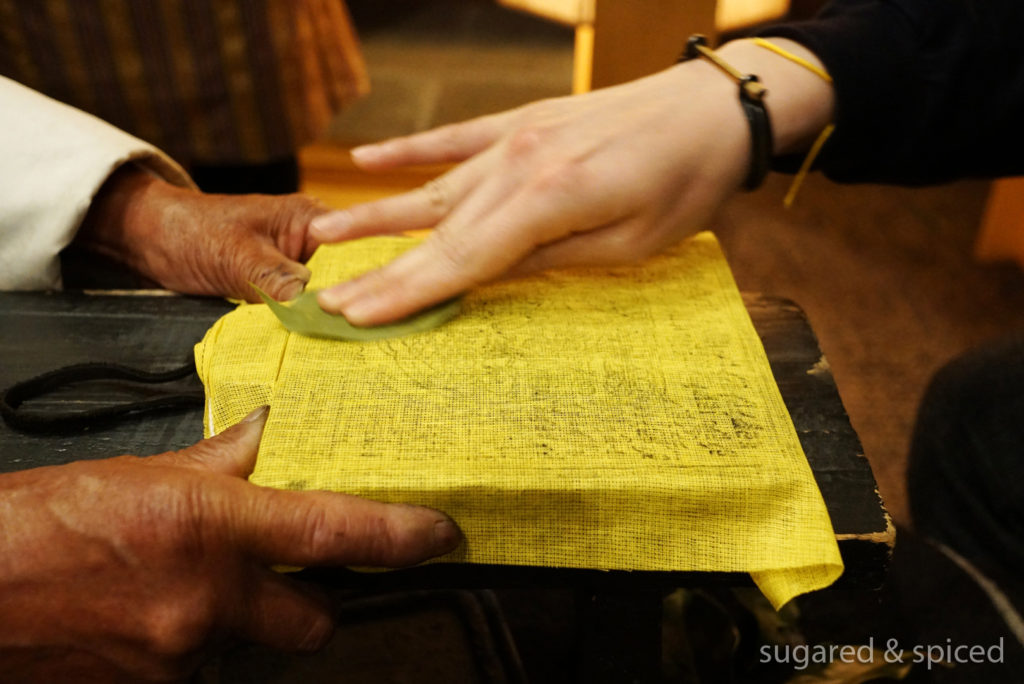
Ta-daa. Perfect souvenirs!
完成!非常有意義的紀念品。
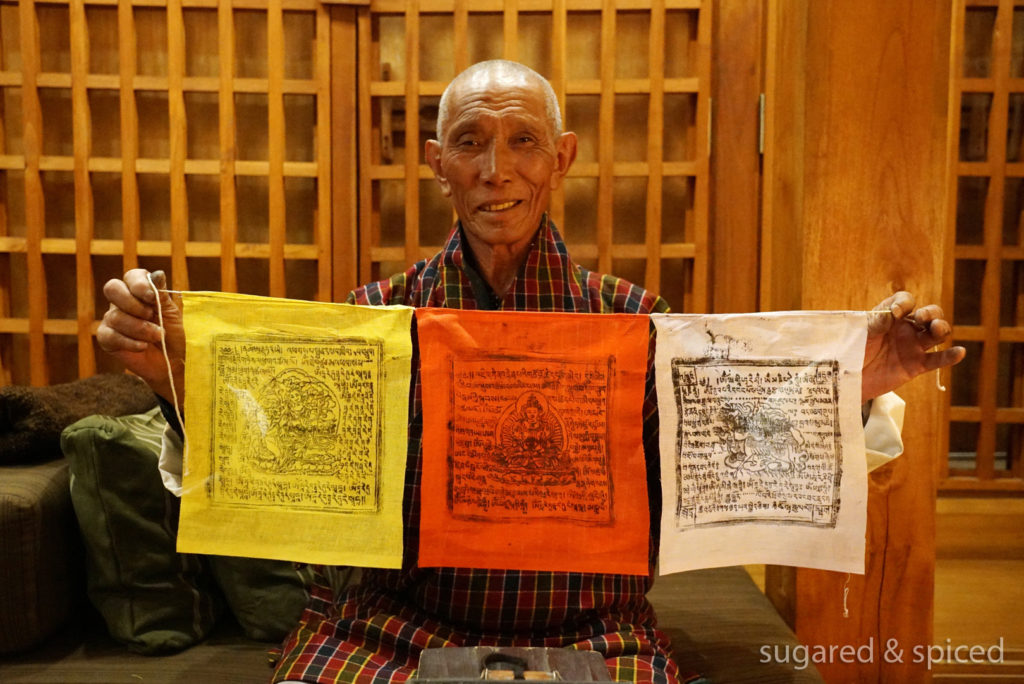
Dinner is usually served in a large dining room, but as there were very few guests that evening, Amankora arranged a more intimate setup for us in the living room.
由於當晚客人不多,Amankora 特別幫我們將晚餐安排在氣氛比餐廳更愜意的起居室裡。
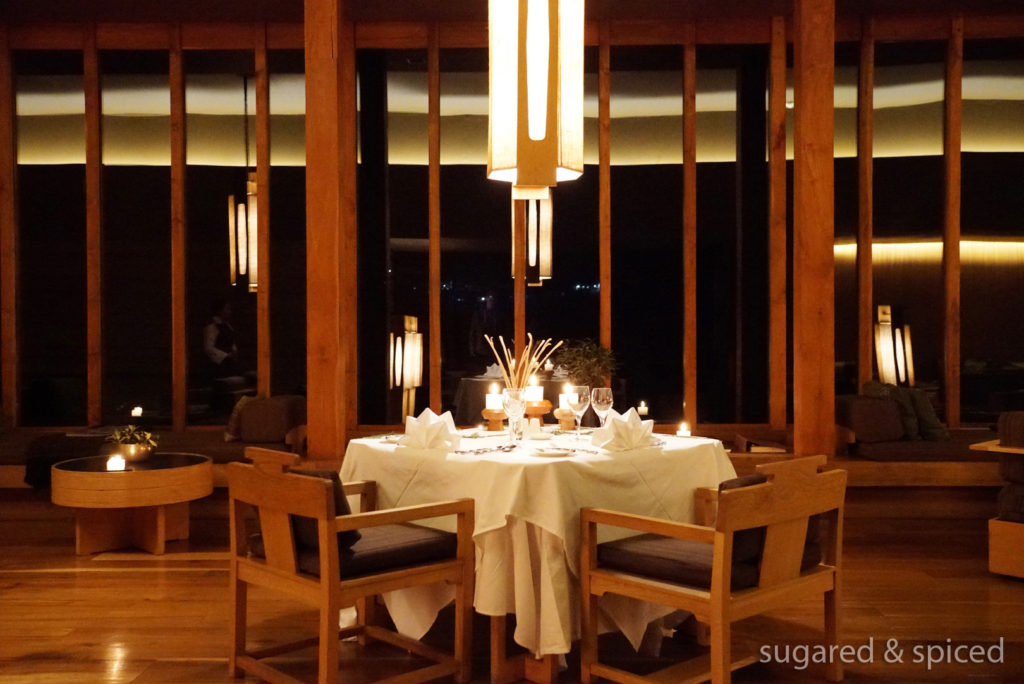
I was pleasantly surprised to find Indian Thali on the dinner menu, and decided it was time to take a break from Bhutanese cuisine. The plate was both beautiful and delicious – from oven-cooked snow fish to Indian cottage cheese stewed with coriander, onion, garlic, ginger, and tomato, each was a delight!
打開菜單,驚喜的發現有印度料理選擇,決定試試。Indian Thali 盛在一個精緻的金色圓盤上,從爐烤鱈魚至印度茅屋起司燉洋蔥和番茄,樣樣美味!
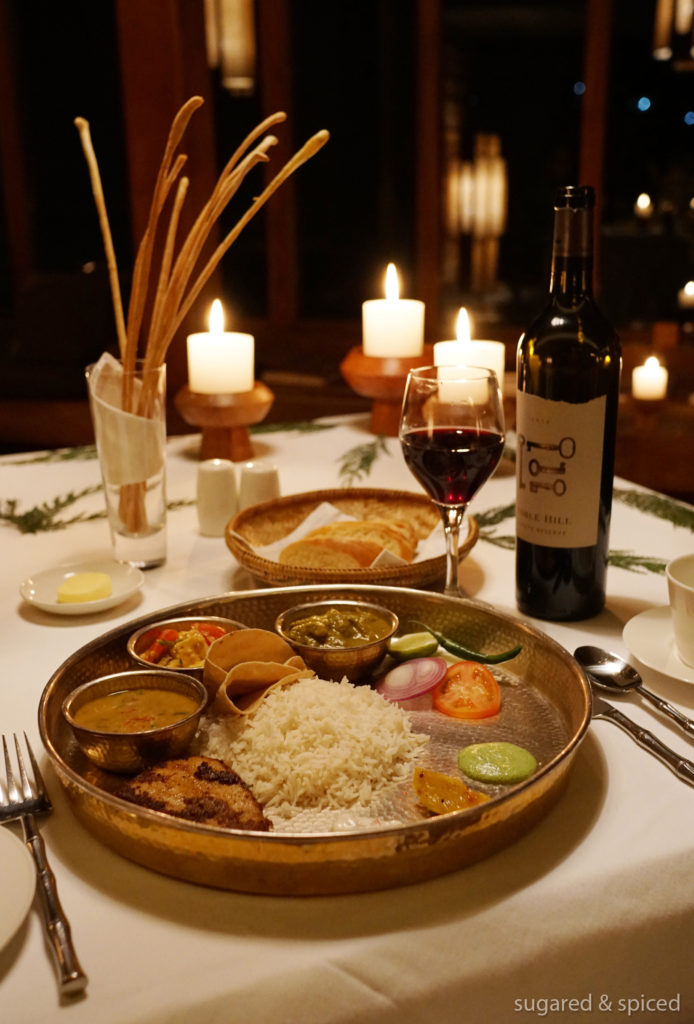
To finish the meal on a sweet note, here’s a Paro apple tarte tatin with caramel sauce and vanilla ice-cream.
甜蜜的結尾 – 用 Paro 當地產蘋果製成的翻轉蘋果塔、焦糖醬、香草冰淇淋。
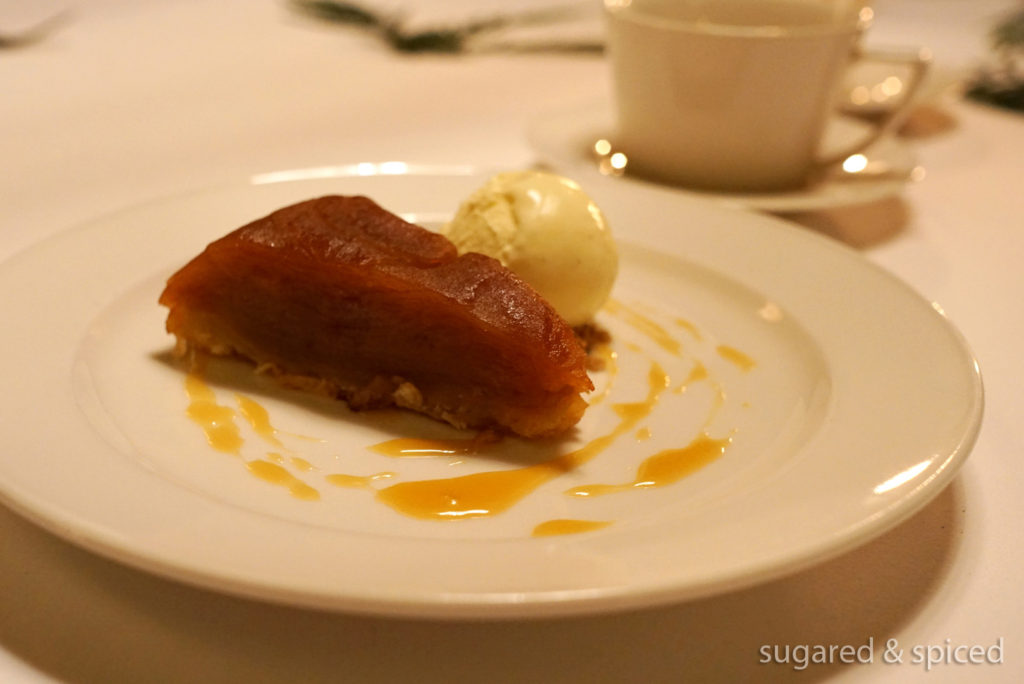
Full-bellied, we retired to our suite for a good night’s sleep, which was especially essential tonight in anticipation of tomorrow’s activity – the hike up to the majestic Tiger’s Nest, the grand finale of our trip.
回房、休息。明天我們將前往這趟旅程的壓軸大戲 – 虎穴寺,今晚必須要好好睡一覺才行。
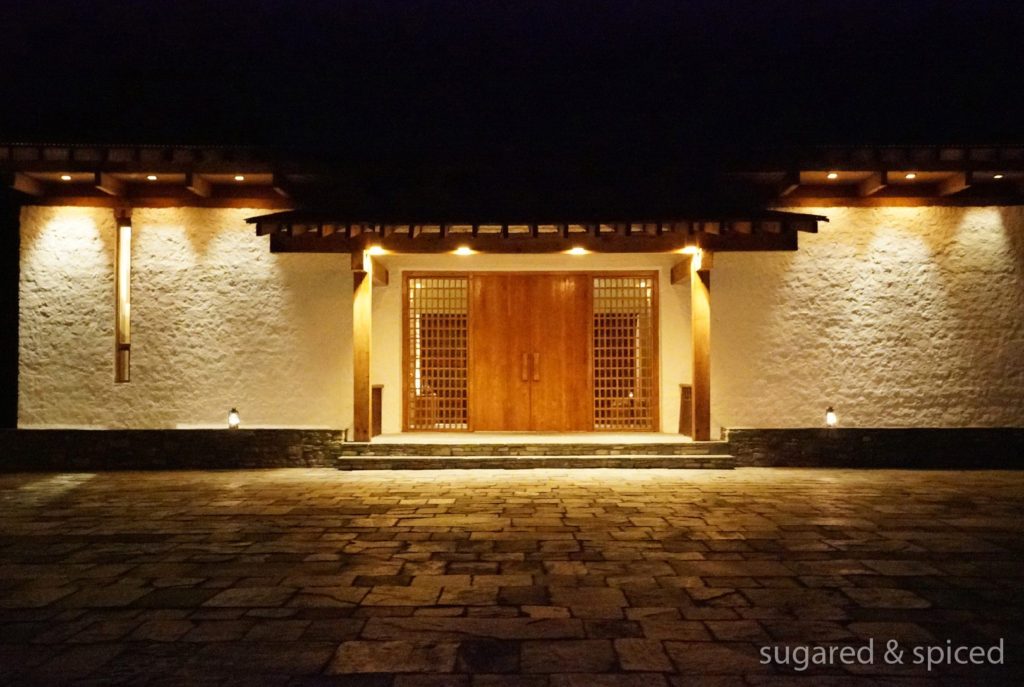
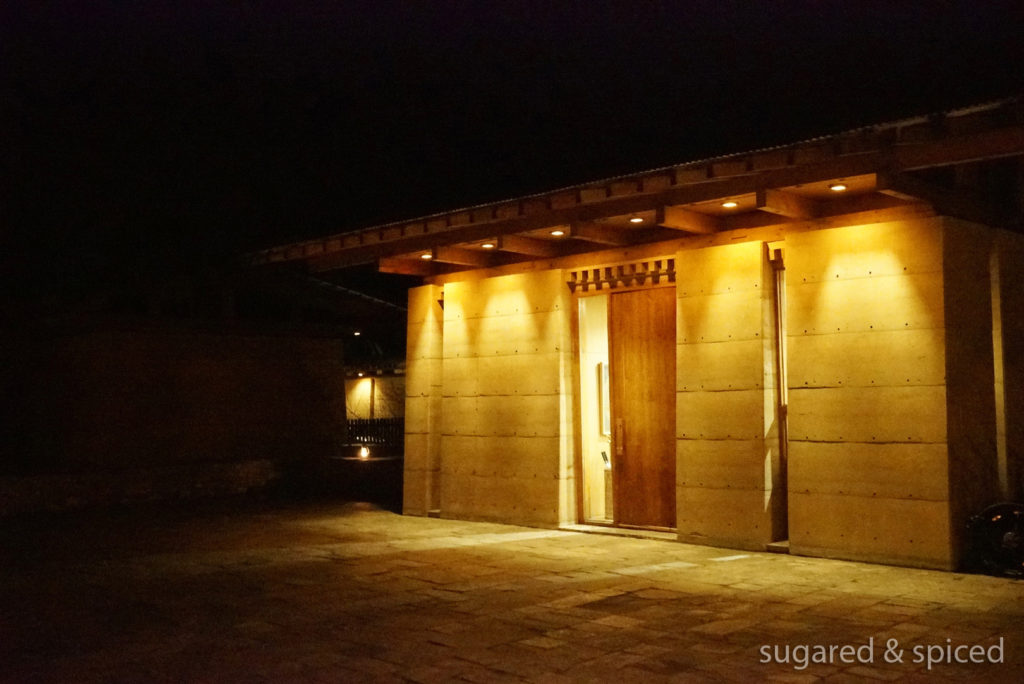
Day 7, Paro
We set off for Tiger’s Next at 7:30am to avoid the crowd and the heat. The monastery, one of the most revered ancient sites in Bhutan, hangs on a precarious cliff at 3,120 meters, about 900 meters above Paro valley. The average round trip hike takes between 4-5 hours (not including the time to visit the monastery), it is uphill the entire way but not overly steep so it should be doable for most people; just be prepared to take your time as the air is thin due to the high elevation.
We came across a few fellow hikers along the way, but were mostly by ourselves throughout the ascent. Again, a great idea to visit Bhutan during off season and to go to popular sites early during the day.
第二天早上,為了避開人潮和艷陽,我們7:30就出發。虎穴寺是不丹最神聖與受敬重的古蹟之一,建於3120米的峭壁之上,與帕羅山谷垂直約900米。來回腳程約4-5小時左右(不包括參訪寺廟的時間),沿途幾乎一路上坡,坡度太陡,但高海拔空氣較稀薄,建議放慢速度,這趟路對大部分身體健康的人來說都是可以完成的。
上山的路上沒有遇到太多其他遊客,果然,在淡季造訪不丹,一早先前往熱門景點,是個好選擇。
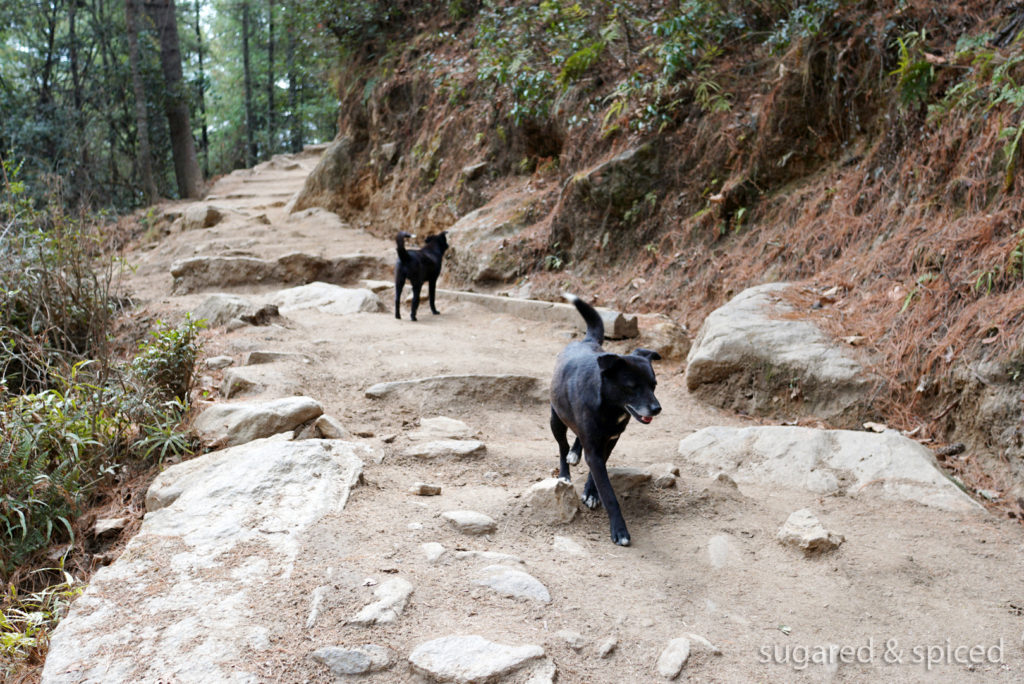
Cairns (stacks of rocks for trail marking / spiritual purposes) along the hike.
一路上看到的小石堆。
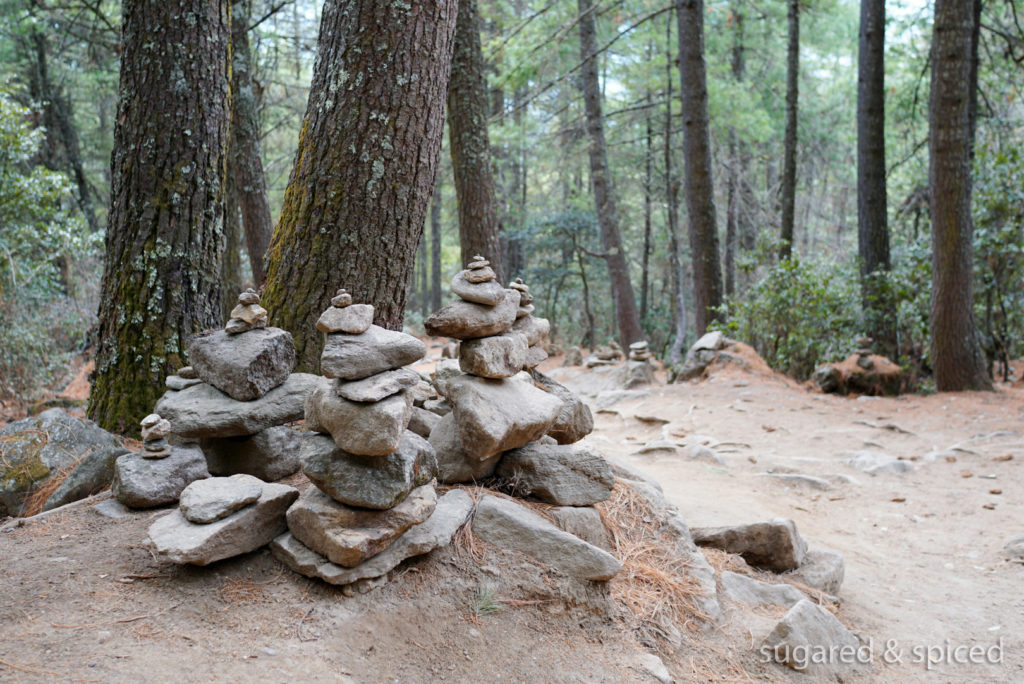
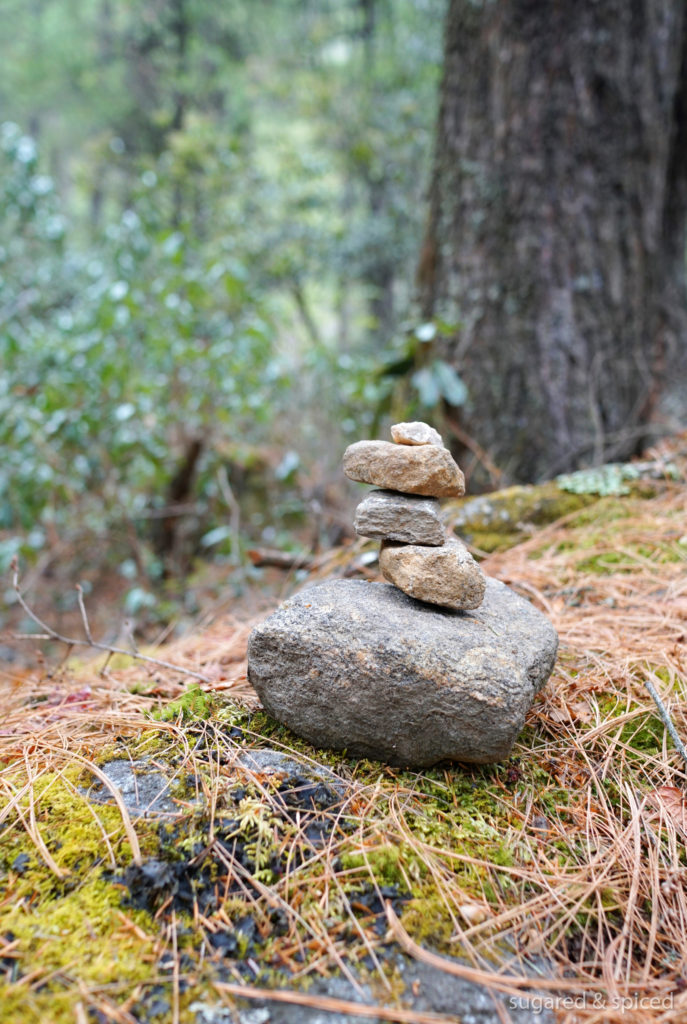
Note: there is an option of doing the first stretch of the hike by horseback, but we decided to go by foot all the way. The locals believe that climbing by foot not only shows more piety, but also avoids inflicting suffering on the horses.
注:上山的第一段路可以騎馬,不過既然體力沒問題,我們選擇一路步行。當地人認為步行是最虔誠的參拜方式,不推崇將自己的痛苦轉移到馬的身上。
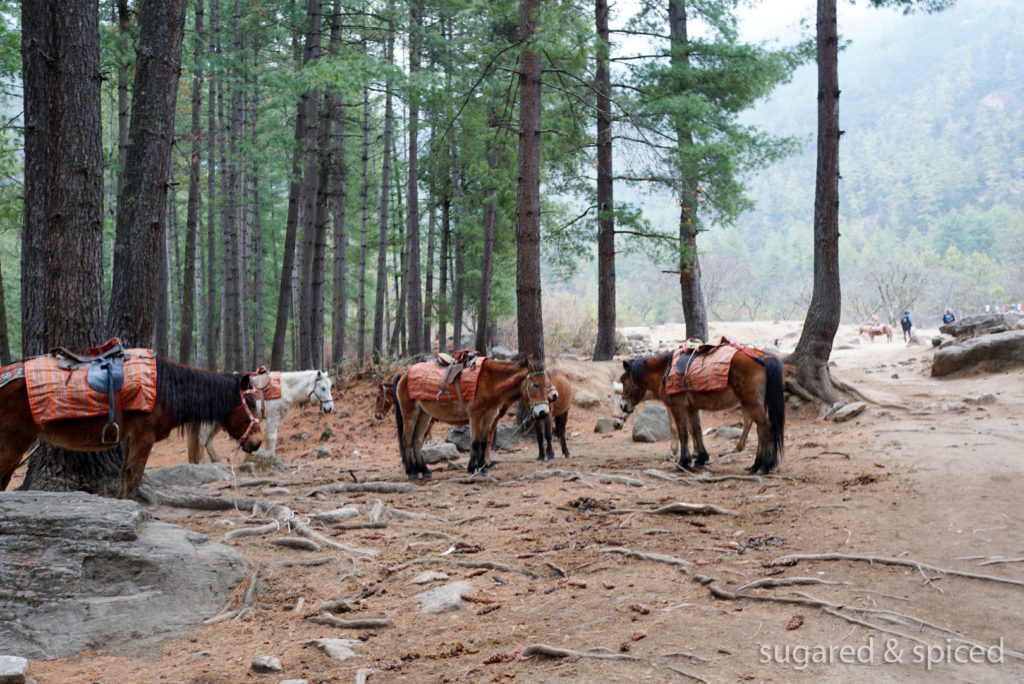
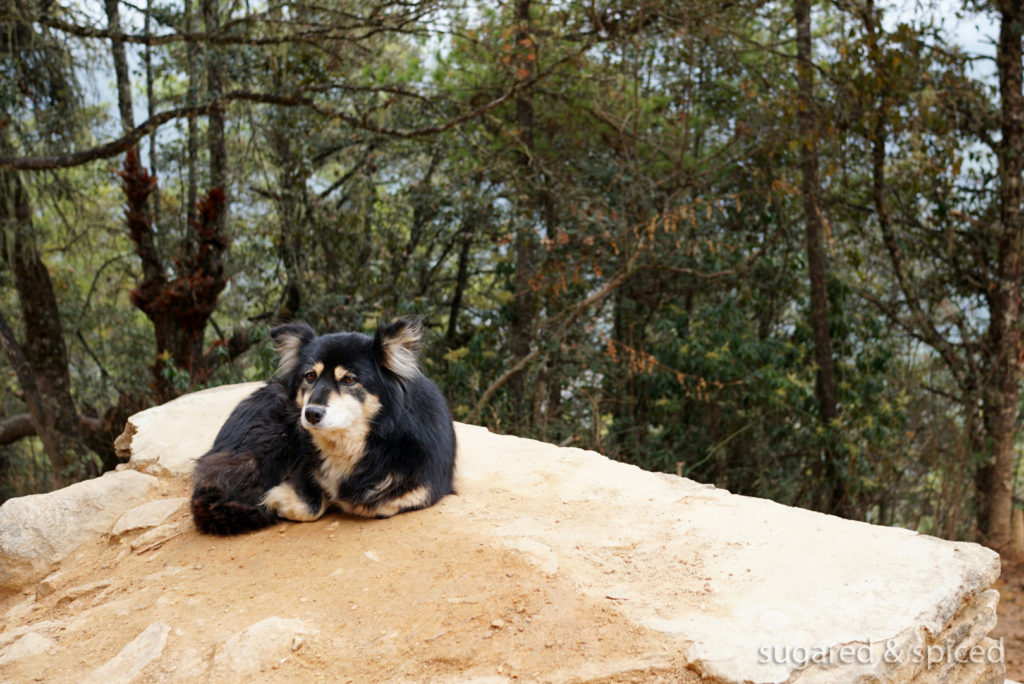
Tiger’s Nest was constructed in 1692 around the cave where Guru Rinpoche was believed to have meditated for three* years, three months, three weeks, three days and three hours back in the 8th century. There is a legend that Guru Rinpoche was carried from Tibet to this location on the back of a tigress, thus giving it the name “Tiger’s Nest.” Whether his superhuman feat really happened is a moot point – the loyalty and devotion to Guru of the people of this region could not be more real.
*Three is a significant number in Buddhism because it represents the Buddha, the Dharma (Buddhist teaching), and the Sangha (Buddhist following/community).
關於虎穴寺的一點點背景知識:傳說8世紀時蓮花生大師曾騎虎飛過此地,在一處山洞中冥想了三年、三月、三週、三天、三小時,這個山洞就是後來信徒們與1691年建造虎穴寺的地點。
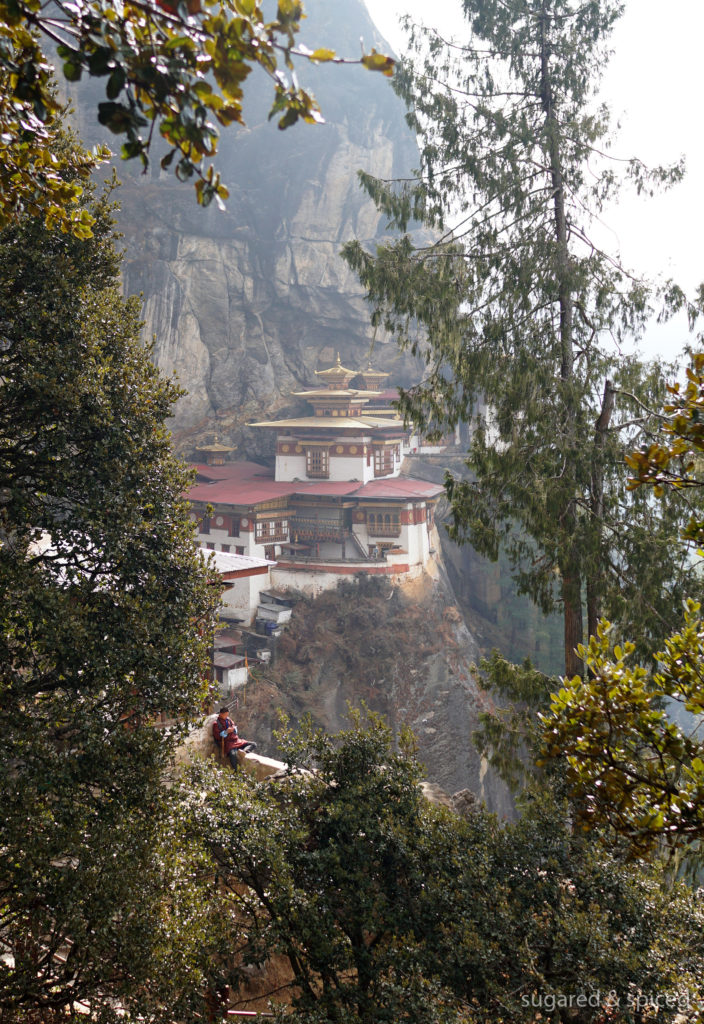
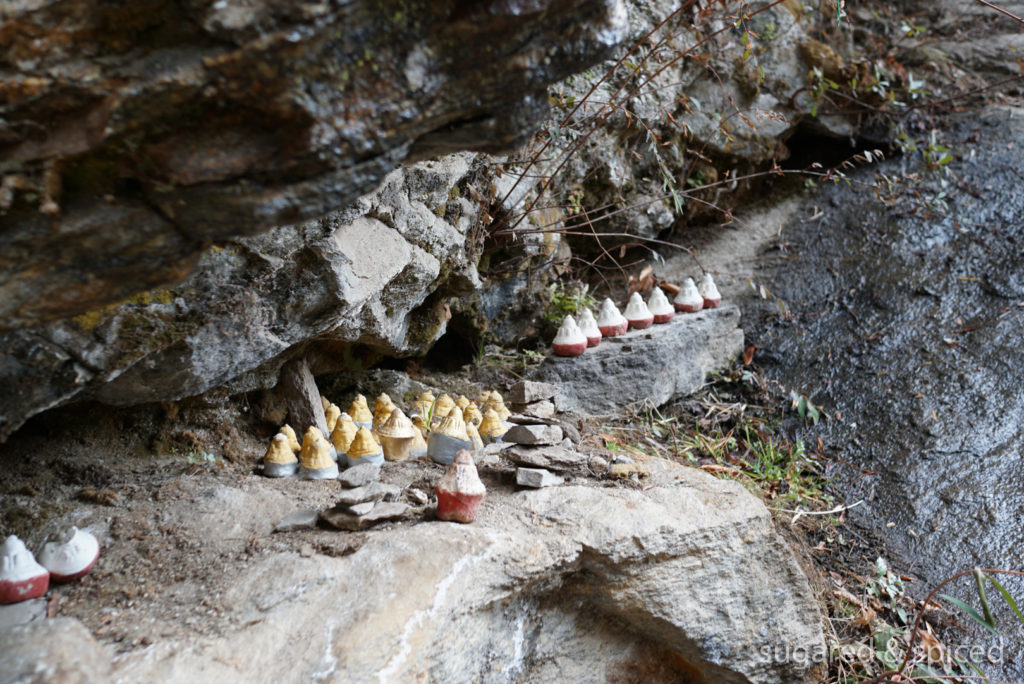
As we climbed, the monastery seemed to appear and disappear in and out of the trees and the mists. After about two hours, we finally arrived at the beginning of the entrance to the Tiger’s Nest, a rock outcropping overlooking a vast chasm, with the monastery sitting majestically across on the other side, as if it has floated down out of the sky to perch on the side of the hill to rest. Dreamy, wispy clouds were coming off the mountains.
And then, all of a sudden, it started to snow. I looked up and felt the tiny flecks of white fluff fall softly on my face, like blessings from heaven.
攀爬兩小時後,我們終於抵達可眺望到虎穴寺的入口平台。寺廟座落於懸崖對面,看上去像是一隻從天空中緩緩降下,暫停休息著的鳥兒。
正讚嘆著風景之美,突然感受到輕柔雪花落在臉上。呀,居然下起了雪。據 Dawa 說,當地人相信雪是來自上天的祝福,他爬虎穴寺數十次,還是第一次遇到下雪呢。
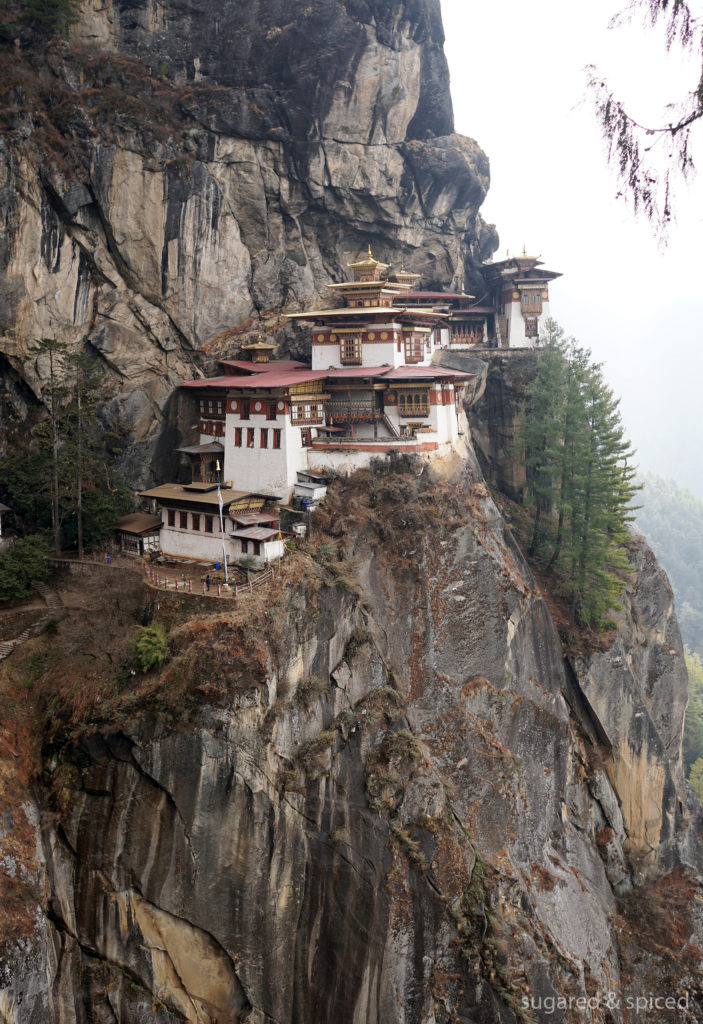
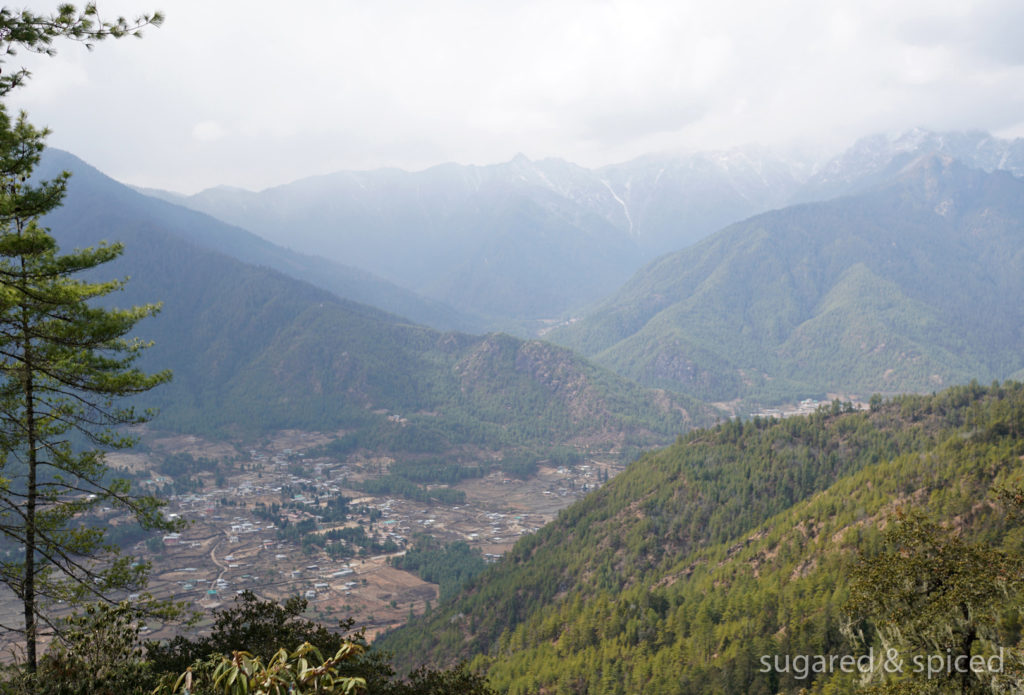
We climbed yet a few hundreds steps in the light snow to arrive at Tiger’s Nest. The structure consists of four temples and residential shelters, including the cave where Guru Rinpoche first entered and the cave where he resided. At the main temple, which houses a dozen images of Bodhisattvas accompanied by flickering butter lamps, a lone monk sat by the window, chanting. Since there weren’t many other guests around, we took the time to sit down and take in the spiritual ambience. As with many moments in Bhutan, it genuinely felt as though time stood still.
在飄雪中又走了幾百階階梯,終於抵達虎穴寺。建築總共有四個寺廟以及居所,包括當天蓮花生大師抵達的洞穴,以及他冥想的洞穴。在主寺廟裡有許多菩薩像以及散發溫暖光芒的酥油燈,一位和尚獨自坐在窗邊,嘴裡低吟著經文。當時沒有太多其他遊客,於是我們席地而坐,滿滿感受神聖的氣氛。那一刻,時間似乎是靜止的。
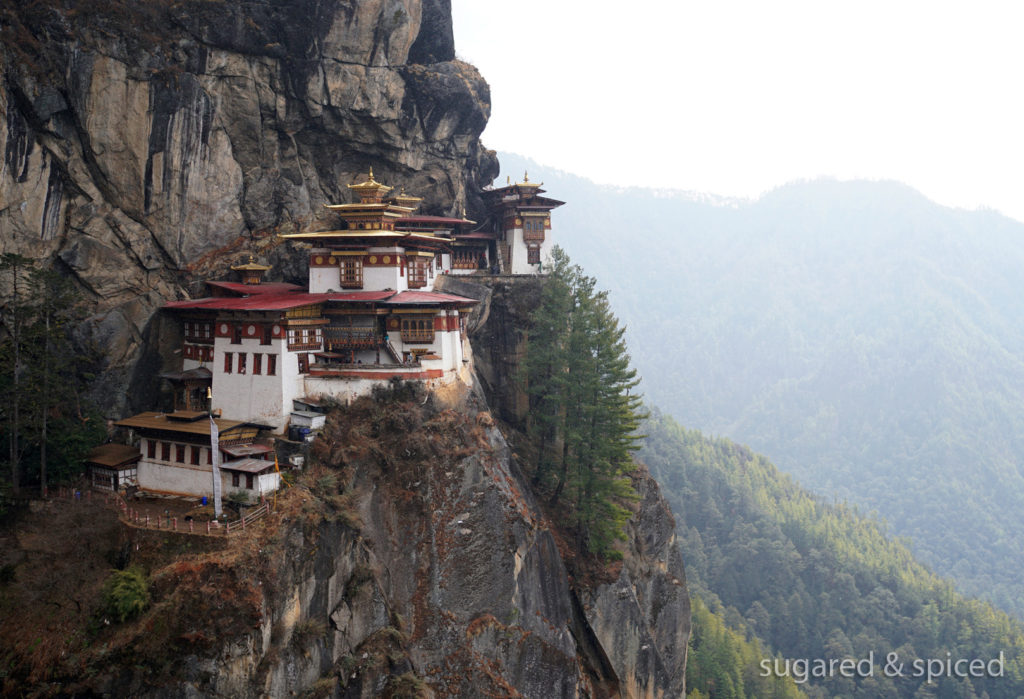
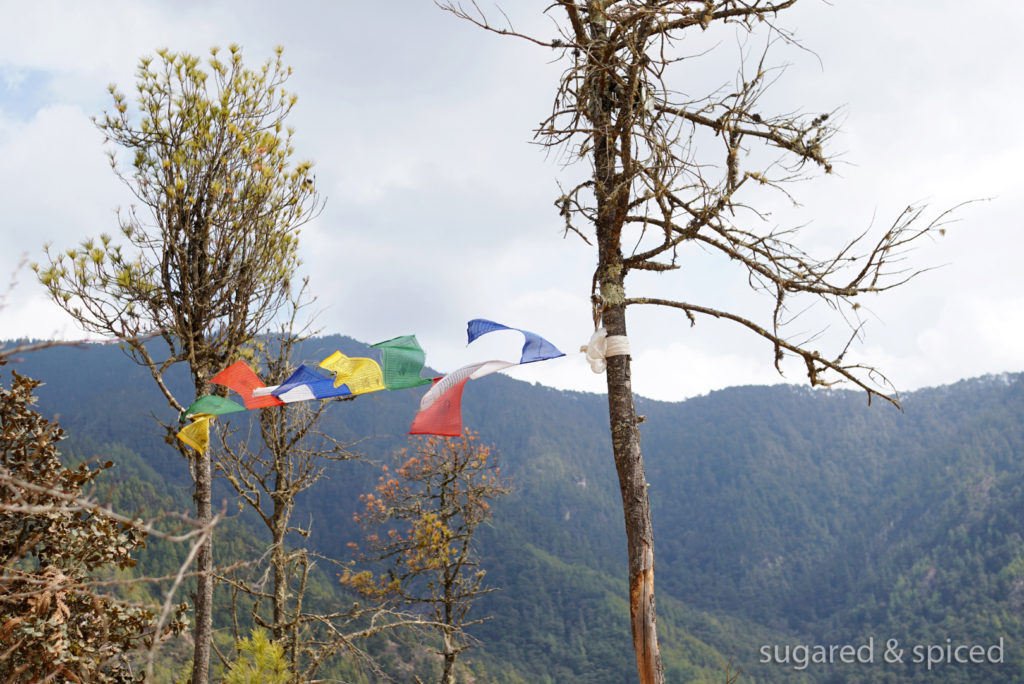
It suffices to say that no trip to Bhutan would be complete without a visit to this remarkable heritage site. The rest of our journey seemed like a blur – there was a quick hop to Paro town center, another relaxing evening at the lodge, and before I was ready, we were already in the car heading for the airport. As I said goodbye to Dawa and Kinley, holding their hands in mine, I could feel emotions swelling up inside.
不用說,虎穴寺絕對是不丹行程中不可或缺的重點。之後的旅程似乎都糊在一起了,印象中短暫去了 Paro 市中心,在 Amankora 度過又一個放鬆的夜晚,然後 – 我都還沒準備好 – 就已經上車前往機場了。在機場入口和 Dawa 與 Kinley 道別時不捨之情冷不防地湧上來,握著兩人的手說了幾句感激的話,感覺自己快哭了,趕緊揮別轉身進入機場。
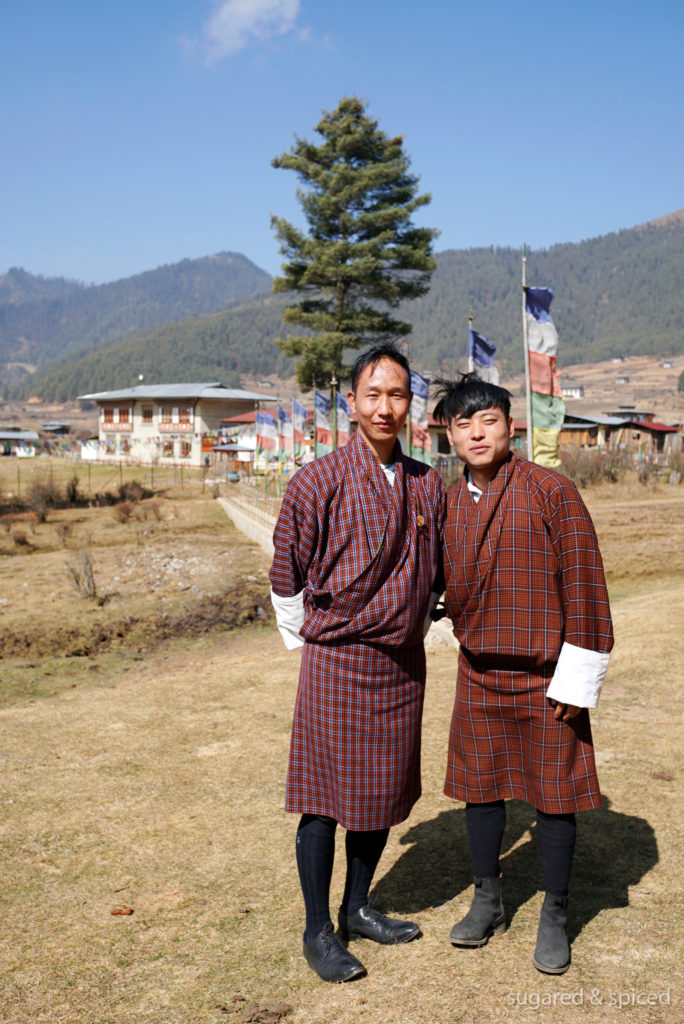
And just as I was passing through customs, I teared up. It’s unusual of me to cry at the end of a trip, in fact I can’t remember this ever happening before. I suppose the emotion was a mixture of gratitude for all that I experienced in the past few days, and sadness to leave this special place. As our flight took off, the beautiful mountains drew further and further until they disappeared behind clouds, and I felt – as terribly cliché as it sounds – that a piece of my heart was left here in Bhutan.
在過海關準備離境的那一刻,一時間勾動千百心緒,嘩啦!眼淚就這麼掉了下來,把自己也嚇了一跳 – 我並不是一個會在旅途結束後哭的人啊。那是種複雜的心情 – 為自己能來到不丹感到非常幸運,同時也為離開而感到不捨和難過。當飛機起飛,我透過小窗戶看著腳下的山脈越變越小,最終消失在雲層之後。雖然這說實在太老掉牙了,但我心的一部分似乎就這麼落在了不丹。
Epilogue
Three months after returning from Bhutan, I finally managed to finish these blog posts. This took way longer than expected, mainly because I kept fussing over the words which never seem to adequately convey what I’ve experienced. I hope one day you will be able to visit, so you may feel the lure of this magical kingdom and the impression it will have on your soul.
It goes without saying that the trip would not have been the same without Amankora. The lodge staff took such meticulous care of everything. All there was left for us to do was to be in the moment and soak everything up with an open heart. I can recall countless details that made the trip smooth and memorable – hot hand towels and soothing apple ciders upon returning to the lodge, neatly folded laundry and scrubbed-clean-like-new hiking shoes, thoughtful gifts waiting for us on the bed each evening, surprise picnic by the private temple, traditional hot stone bath inside a potato shed…Choosing Amankora to be the host of our journey into Bhutan was an excellent decision, one that I would recommend without hesitation.
I’m already dreaming about going back.
不丹之旅的三個多月後,仍然想念。那是個能夠滋潤荒蕪人心的地方,不丹人那純真的笑容,不管看幾次總是叫人感動。我也終於將這幾篇遊記寫完了,花了比想象中要多了很多的時間,似乎無論如何來回修改文字,都無法確切傳達心中的感受。
不用說,這次的旅程若沒有 Amankora 是不可能成行的。除了酒店本身別有風格的建築環境、設施、與軟硬體服務之外,由嚮導全程帶領和照護的旅行更令人感到舒適難忘。每次出行回來,都有服務人員在門口等候,微笑著遞上熱毛巾,送上一杯熱茶或冰飲;每天早晨或下午活動後,手制的小點心會放在茶几上、乾淨的衣服在籃子裡送回;每天夜晚不重複的不丹特色小禮物…還有各種令人驚喜的活動安排,比如寺廟邊的野餐,或是野外的傳統熱石浴。酒店的工作人員將一切打點完美,我們什麼都無需擔心,只要將身心敞開,全力地感受這片土地帶來的震撼。不丹時光,就在 Amankora 的陪伴下,怡然而過。
希望有一天你能夠親自造訪不丹,感受這神奇國度的迷人之處,以及它為靈魂帶來的改變。
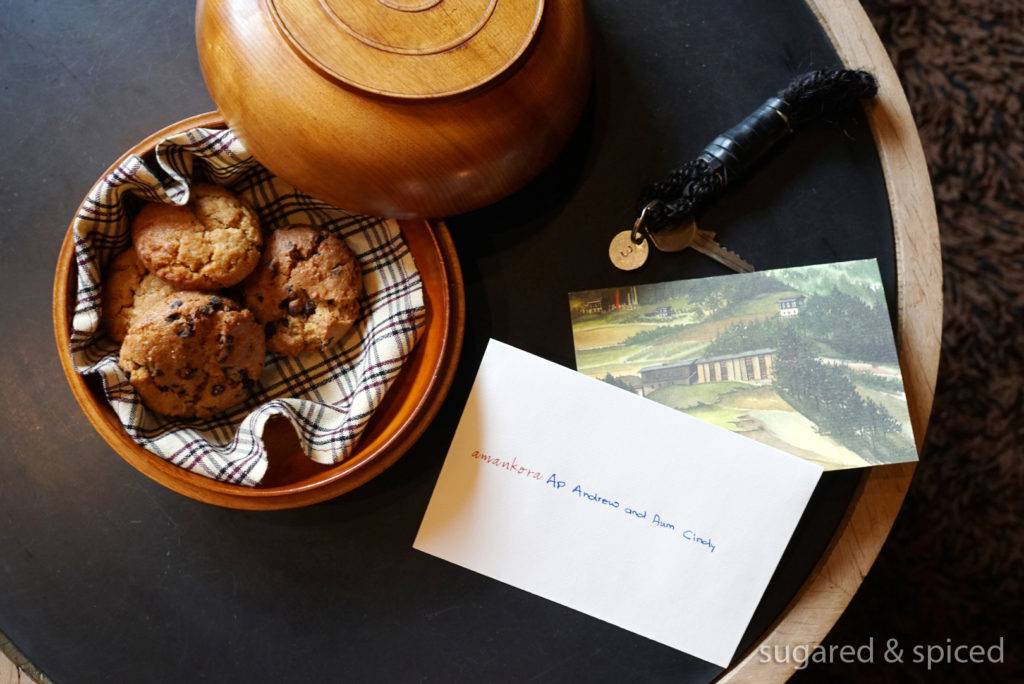
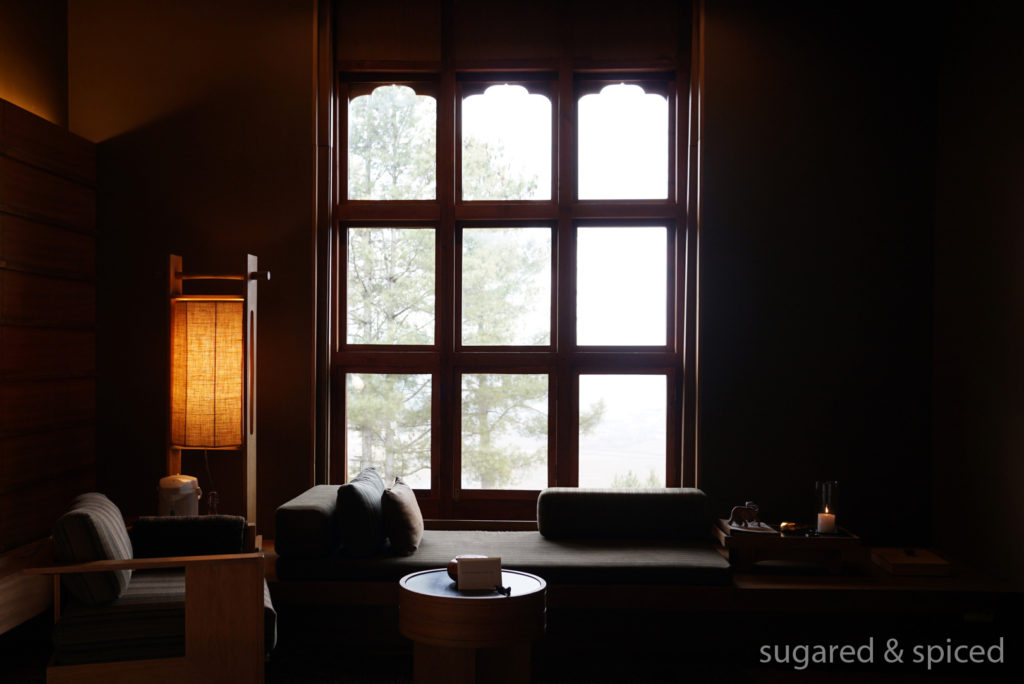
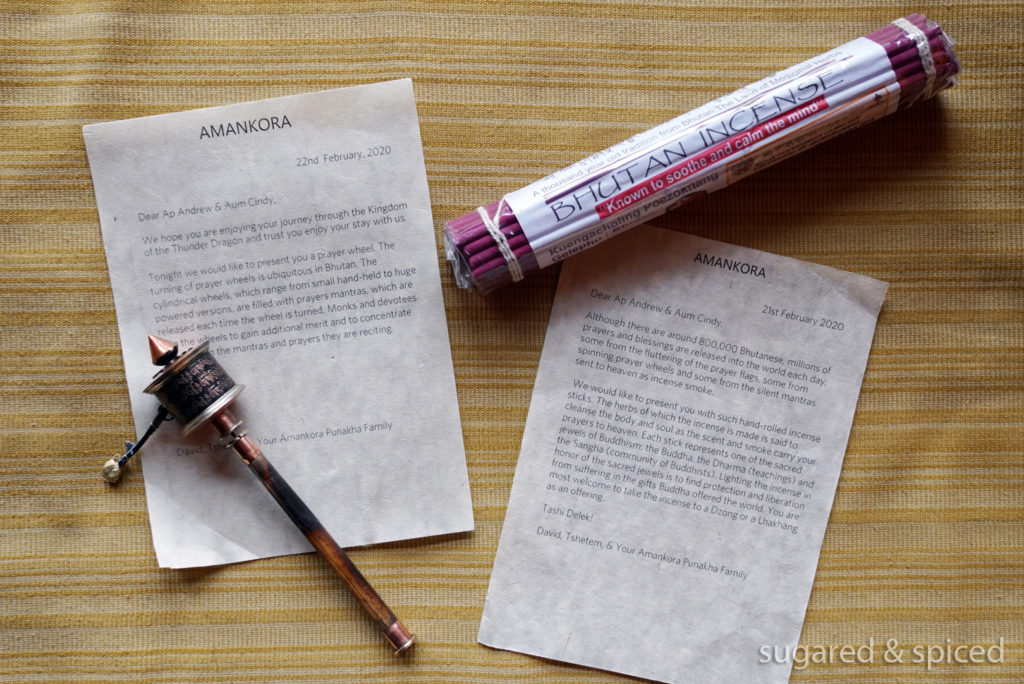
I enjoy reading all of your posts, but this Bhutan series was really so wonderful. Thank you for sharing your experience in all your beautiful photos and writing!
Thank you for the lovely comment. The trip to Bhutan was truly unforgettable and I tried (really hard) to capture that in the writing and photos…I’m so glad you enjoy it!
Hello Cindy,
I did the same itinerary as yours but in December 2019. Everything was just perfect including the most wonderful weather throughout the trip. I was planning a return to kora and this time to Bumthang and another lodge, preferably Gangthey plus Thimphu or Paro. But I cancelled because of COVID-19.
Anyhow my photos were a disaster so I must thank you for your photos. It’s like going through the journey again.
Am still determined to go to Bumthang when COVID calms down.
Liu.
Hello Liu, my apologies for the late reply – I haven’t checked comments on the blog in months! I’m so glad to hear that you enjoyed this post, for me as well, I look back at these photos from time to time to remind myself of the magical moments there. I hope your trip to Bumthang happens soon :)